General Insurance Blogs, Articles & Updates by - Magma HDI
Have us call you
- RENEW YOUR POLICY
- BUY NEW POLICY

These drive-away destinations make for a dreamlike weekend getaway
Have you ever felt unproductive while having tight deadlines and no creativity or motivation to complete your tasks? You may be facing burnout and are among 40% of the Indian workforce. While it may seem challenging to get out of such a phase, the best way to overcome the symptoms of burnout is to step away from work and hit refresh! What better way to do so than going on a short vacation?
Considering the intense work pressure and hectic schedules, taking a leave may not always be possible. So why not make the best use of your weekends to drive away from monotony? Short road trips are the perfect way to meet your requirements without overspending. Considering the traffic-packed roads across the country, taking your bike on the journey may be ideal.
If you’re convinced, pack light, gather your friends, get your bike serviced, ensure all the papers are in order, and purchase two wheeler insurance online India. Pick a destination from our specially curated list to experience the joy of a quick getaway over the weekend!
1. Cherrapunji, Meghalaya:
Known as a quaint town, the wettest place on Earth is home to unique living root bridges that you must check out. With well-built expressways through scenic greenery, motorcyclists are in for a joy ride on this journey. We recommend starting from Guwahati or Shillong to experience the best of the town’s old-world charm.
2. Goa:
Planning a vacation without mentioning Goa, irrespective of duration, is impossible. With excellent connectivity to neighbouring states, the party capital is the best place to head to if you need tranquillity or happening parties. The ride through the picture-perfect Konkan belt will stay in your memories forever!
3. Ooty:
The rolling hills of Ooty and its lush greenery make for a serene getaway. Enjoy the view of far-reaching sprawling tea and coffee plantations as you drive through valleys on meandering roads.
4. Jaisalmer:
If rough terrains excite the motorcyclist in you, Rajasthan’s cities are the perfect destinations to plan your next road trip. A panoramic view of the beautiful blend of culture, heritage, and vibrancy will follow you as you make your way to the Golden City. Considering the arid surroundings, planning your trip between November and March is suggested. We urge you to purchase two wheeler insurance online India to cover any mishaps you may encounter during your journey.
5. Araku Valley:
At a little over a hundred kilometres away from the City of Vishakhapatnam is Araku Valley, a hill station with rustic heritage, tribal influence, and coffee plantations. While the journey may be short, the valley offers the best nature, biodiversity, and climate, making for a refreshing retreat.
6. Munnar:
If you fancy long-distance road trips, plan your next trip to Munnar, a hill station in Kerala. Its green hills, waterfalls, and tea plantations make for the perfect view on your journey, which may take up to 04 hours if you start from Kochi.
The other popular destinations include Lonavala, Karjat, Alibag, Nasik, Daman, etc. which promise a happening weekend setting for you to unwind and return with positivity and energy.
This list is not exhaustive and only includes some destinations you can consider setting off. While each destination has a unique appeal, we urge you to purchase two wheeler insurance online India before you depart on your two-day vacation! Safety should always be on top while planning bike trips. Wear proper gear and a helmet to safeguard yourself from any mishap.
Click HERE to buy two wheeler insurance online India.
Disclaimer: The information provided above is for illustrative purposes only. To get more details, please refer to policy wordings and prospectus before purchasing a policy.

These are a few ways you can detect bad clutch problems in your bike
Riding a motorbike with smooth-shifting gears gives you a sense of pleasure that no other thing can. The feeling of downshifting into a curve, soaring your RPMs, then switching back into high and rushing down the straightaway is unmatched.
But when the quality of your clutch starts deteriorating, it no longer grips as usual or allows you to smooth down and upshift. If you take too much time to assess a bad clutch, it might leave you stranded during a ride. While the rest of the crew enjoy the journey, you will have to spend extra time repairing or replacing it.
However, knowing the signs of a damaged clutch will help you repair the appropriate pieces before you're left stranded.
In today's post, we'll discuss ways to assess if your clutch is on its way to being damaged. Read along to know how you can avoid costly repairs before it's too late.
1. Slipping of clutch:
The clutch slipping indicates that it has already begun to wear down. You may sense a lag or a slight jerk when your bike starts picking up. The RPM starts to increase faster than it should. If any of these occur, your bike's clutch is worn out, and it's time to get it repaired.
2. Sticking of clutch:
Your bike's clutch will start to stick if there is a malfunction or oil-induced dirt in the springs. It can either stick in or out depending on when the event occurs. The clutch parts will cling together as you change gears resulting in a low-power transmission. A sticky clutch might be mistaken for a general bike problem, so be extra cautious and get it diagnosed.
3. Hard to shift gears:
If your clutch wire is loose or the clutch gap is compressed, the bike will not accelerate because you won't be able to shift gears. When parking your bike, it's best to keep it in neutral, although some people leave it in first gear. So if you ever experience a slack in shifting gears, visit the mechanic.
Tip: To minimise clutch dislocation and overheating, always start your bike in neutral. Overheating the metal components causes them to expand, lowering the spacing distance. However, the clutch relies on friction to transfer power, so oil the parts regularly to avoid overheating.
4. Sharp metallic noise:
If you've recently noticed a strange sound emanating from your bike and it becomes louder as the days pass, it might be your clutch asking for attention.
5. Burning smell:
A burning odour may signal a clutch problem, which you should not neglect. If a mechanical noise accompanies the smell, you should have the clutch pad checked out as soon as possible to avoid any more damage.
These are some ways you can detect a problem with your clutch system. Make sure you always park your bike on neutral. Oil the clutch system periodically, but don't put too much oil. Never use the clutch as the braking alternative unless it's very needful, like in case of brake failures.
While you ensure your clutch pad, insure your bike as well, it will help you in case of mechanic visits for your clutch repairs and avoid additional expenses. Purchase bike insurance online and add value to your two-wheeler with the benefits of comprehensive coverage.
Click HERE to get the best bike insurance online right now.
Disclaimer: The information provided above is for illustrative purposes only. To get more details, please refer to policy wordings and prospectus before purchasing a policy.
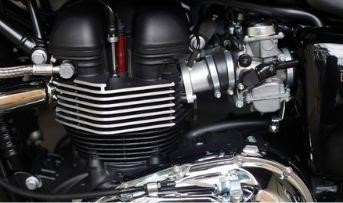
Your bike’s cubic capacity can directly impact its insurance premium, here’s all you need to know
Manufacturing date, location, vehicle model, claims history with add-ons, and optional deductibles are a few variables that could impact your bike insurance. However, some other aspects could also influence the cost of insurance.
An essential factor in calculating the insurance premium is the two-wheeler's cubic capacity (cc), also known as its engine capacity. Continue reading to learn how your bike's cubic capacity affects its insurance cost.
What is the cubic capacity of a bike?
The capacity of your bike's engine is measured by its cc i.e., cubic capacity. A bike's engine size is essential since it affects how much power it can produce. A two-wheeler is thought to be stronger if its chamber is larger. Similar to how a four-wheeler vehicle's engine capacity is expressed in litres, a bike's capacity is understood similarly.
Bikes with higher cubic capacity come equipped with large cylinders that can produce extensive power output from the engine. This results in low fuel efficiency as more consumption is observed to drive more engine power output per stroke.
Bikes with higher cubic capacities are expensive. This is because intense mechanical fitness and build are required for the bike to withstand tremendous torque and power. Higher cc bikes have premium quality brake pads, comfortable suspension, and excellent exhaust that can easily overcome the wear and tear that might result from high-speed riding.
What effect does your bike's cubic capacity have on policy premiums?
Your bike's engine power is critical in the premium fixing process. The engine's cubic capacity affects the cost of your motorcycle insurance. A 75 cc bike would be less expensive to insure than a 220 cc bike. Take proper care of your bike's engine to guarantee that it operates smoothly.
Higher cc bikes would cost more to insure because your insurance rate directly correlates to your engine's cubic capacity (cc). When determining the third-party insurance rate, the IRDAI primarily considers the cc of your bike.
A bike's cc majorly determines the on-road cost of the bike. Low-cc bikes are less expensive than high-cc ones. The insurance premium for expensive bikes is more, considering their superior build quality and use of costly parts.
Other elements that affect the insurance premium for bikes with the higher cubic capacity.
Here are the various factors that influence the premium of the higher cubic capacity bikes:
● Geographic location: Compared to Tier II cities or rural areas, the premium is more significant if you stay in a metropolitan metropolis. Compared to non-metro regions, urban areas have a higher risk factor.
● Year of production: The age of the vehicle directly affects the insured amount. The insurance sum will decrease as time goes on since the bike loses value.
● Make and model of the bike: Premiums for high-end/premium bikes are higher; premiums for entry-level bikes are lower.
● Add-ons: In return for a more premium for bikes with higher cubic capacity, add-ons safeguard you against situations that aren't covered by the basic program.
● Installation of security measures: Lowering the danger of theft and the likelihood of damage by installing anti-theft devices or other security measures reduces the insurance price. By installing security devices, you can get a reduction in insurance premiums for bikes with higher cubic capacity.
Every bike driven on the road must be covered by third-party insurance. Therefore, in addition to looking at the bike's qualities before buying one, you should also consider getting bike insurance. Shop around to buy motor insurance online that best suits your needs and expectations. You can reduce the cost of two-wheeler insurance while maintaining adequate coverage if you heed the above suggestions.
Click HERE to buy motor insurance online.
Disclaimer: The information provided above is for illustrative purposes only. To get more details, please refer to policy wordings and prospectus before purchasing a policy.
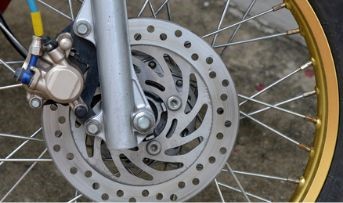
These advanced technologies are making motorcycle rides safer and how
The ever-increasing number of vehicles on Indian roads is constantly posing a risk to the safety of drivers, riders, and pedestrians. While purchasing the best two wheeler insurance in India is a mandatory requirement, several advanced technologies have also evolved to make motorcycle rides safer. These technologies are helping to reduce the number of accidents and enhancing road safety.
Let us have a look at them in detail.
1. Anti-lock braking system:
An anti-lock braking system or ABS is a technology that prevents a motorcycle’s wheels from locking when sudden brakes are applied. Hurried braking is usually used when an object or a vehicle appears suddenly in front of the bike. This may cause our motorcycle to skid and cause serious bodily injuries and even damage to the bike.
ABS makes use of speed sensors that are fitted on both wheels. It senses that a wheel lockup is about to occur and instantly reduces brake pressure. This prevents the motorcycle from skidding, preventing an accident.
2. Wearable airbags:
We have always known that cars come equipped with airbags that open up instantly at the time of a car crash. They minimise the impact of accidents and help to save lives. Most of us do not know that wearable airbags for bikes are now being made with the help of modern technology that performs a similar function as cars’ airbags at the time of a crash. Wearable airbags are put into a vest and can be worn with a compatible jacket. The airbag inflates during a collision and then deflates automatically. It cushions the rider and the pillion rider, minimising the crash's impact. These airbags can be a lifesaver and protect the upper half of the body. Also, these airbags are universal in nature and can be used with any motorcycle make and model.
3. Motorcycle alert systems:
Modern technology has enabled the incorporation of radar sensors that can scan our surroundings and identify potential dangers, even in motorcycles. These sensors can help us map the vehicles around us and alert us of any possible collision. They can also warn us of approaching vehicles or if a vehicle gets too close to us.
Motorcycles nowadays also come with sensors that alert us if our kickstand or side stand is open by flashing a light on the display panel. This helps avert a possible crash due to the open kickstand while riding.
4. Advanced lighting:
Motorcycles now have advanced LED lighting systems that produce optimal beams for enhanced street visibility. This minimises the chances of an accident due to poor visibility on the streets at night or during heavy fog conditions. Also, motorcycles have hi-technology illumination systems that enhance their visibility in poor light conditions.
5. Modern helmets:
Helmets are being made with advanced technology, making them lighter and sturdier. Modern-day helmets make our rides safer and protect our heads better than older models of helmets at the time of a crash.
Helmets nowadays also come equipped with hi-tech Bluetooth headsets and good-quality cameras. They help bikers stay connected during a ride, especially in difficult and risky terrains. The cameras are capable of capturing minute details during a ride. Riders can go through the recordings after finishing their ride and make a note of the possible improvements.
Modern technology is a blessing in reducing the number of road accidents. These innovations might cost us money, but they are worth every penny spent on them as they reward us with a safe journey. Two wheeler insurance also makes our motorcycle rides safer by protecting us financially in case of a crash. Choose the best two wheeler insurance in India to ensure complete motorcycle coverage and hassle-free claim settlement in times of need.
Click HERE to buy the best two wheeler insurance in India.
Disclaimer: The information provided above is for illustrative purposes only. To get more details, please refer to policy wordings and prospectus before purchasing a policy.

Tips to renew the vehicle fitness certificate of your old two-wheeler
As two-wheelers turn old, their performance and the quality of their internal parts start to deteriorate. Significantly, the engine gets severely affected, which leads to more fuel consumption and harmful emissions. Such two-wheelers are then considered not fit to ride.
If you own an old two-wheeler and wish to ride it on Indian roads legally, then you need to have a fitness certificate for it. The Government of India has made the renewal of fitness certificates convenient by introducing the 'Parivahan Sewa portal' that operates entirely online.
Applying online is a hassle-free process as you only need to fill out a form and submit all the required documents to your local Regional Transport Office (RTO) for verification.
In today's post, we will take you through the step-by-step process of renewing your two-wheeler's fitness certificate online:
1. Go to the official VAHAN website. Begin the renewal process by going to 'Online Services' and selecting 'Vehicle Related Services.'
2. After that, choose your state. Next, click on 'Application for Fitness Certificate' and enter your bike's registration number and chassis number.
3. Following that, generate an OTP using your registered phone number. Enter the one-time password (OTP) that you received on your phone to proceed with the process.
4. Go to the 'Payment' option and complete the transaction to start the renewal fee transfer.
5. After completing these procedures, take the appropriate documentation to your local RTO to complete the two-wheeler fitness renewal process. Officials at the RTO will perform a fitness test on your bike and verify your documents to complete the process.
Steps to renew fitness certificate of two-wheeler offline.
Here is how you can acquire a fitness certificate for your bike offline:
1. Visit the local RTO
2. Fill out an application for a fitness certificate renewal
3. After that, attach the required documents to the application
4. To finish the procedure, pay the RTO the renewal fee for your bike fitness certificate
The officers will review your submitted documents and schedule an appointment for your bike's inspection. You must arrive at the designated centre on time. Here, your two-wheeler will be thoroughly investigated, and if it qualifies the desired parameters, you will be issued the fitness certificate for your bike.
Note: Although the renewal process is the same for both two and four-wheelers, the fee differs for both types of vehicles.
Complete list of documents you will require:
• Tax token
• Registration certificate
• Vehicle permit
• Pollution Under Control Certificate or PUCC
• Valid two-wheeler insurance policy papers
• Passport size photo
According to the Motor Vehicles Act of 1989, a vehicle's registration is only acceptable if a valid Vehicle Fitness Certificate accompanies it. Commercial and private automobiles are required by law to have a fitness certificate. Failing to submit a fitness certificate carries a punishment of Rs. 100. For consecutive violations, the fine is increased to Rs. 300. If you don't have a valid fitness certificate, you'll be fined between Rs. 2,000 to 5,000.
The law also mandates two wheeler insurance India. Failing to have both these documents can lead to hefty fines. Save yourself from the trouble and get the fitness certificate and insurance today. You can only enjoy riding your two-wheeler if you keep the required documents up-to-date and avoid landing yourself in any unwanted trouble.
Click HERE to buy the best two wheeler insurance India.
Disclaimer: The information provided above is for illustrative purposes only. To get more details, please refer to policy wordings and prospectus before purchasing a policy.

Wondering why your motor insurance premium is so high? Fuel may be the reason
While electric vehicles are capturing the vehicle market, petrol and diesel-based cars still need to be put in trend. Maximum Indian citizens today own fuel-based vehicles, be it two-wheeler or a four-wheeler. But these fuel-based cars also have a history of superseding one another. Petrol cars have always been the favoured alternative amongst fuel-based vehicles.
Initially, diesel usage focused on heavy vehicles operated for commercial purposes like duty trucks, etc. But with the advancement of technology today, diesel vehicles have become widely popular and opted for daily use vehicles like passenger cars.
But do you know that your motor insurance premium changes for the type of car you use? Fuel may be the reason. Want to know how? Without any further delay, let’s get started.
1. How much is your car’s price:
Diesel-powered and petrol-powered cars are priced differently in the Indian market. Usually, the price of vehicles that have diesel-powered engines is high when compared to their petrol-powered counterparts. A higher price directly reflects on the motor insurance and premium prices.
Therefore, the more expensive a car you have, the higher the motor insurance premium you have to pay. So, figure out the maintenance and premium charges you will have to pay in the future and create a budget in advance so that you do not get surprises of additional premiums like motor insurance.
2. Repair influences the premium charges:
Yes! Even the cost of repair influences the motor insurance premium prices. The repair charges for diesel-based vehicles are much higher than those for petrol-based cars. Therefore, the company charges high premiums for your motor insurance to help cover the claims if you make any in the future. Similarly, if your car has expensive spare parts or is priced in the high-end range, the companies will charge you high motor insurance premiums.
This proves that fuel has a massive impact on premium charges. Having this information before you make any purchase will help you put things into perspective, especially budget-wise. Many factors should be considered when someone decides to purchase a car, one of which is the motor insurance, its premium charges, claims, add-ons, and other features which vary from one insurance provider to another.
3. Is your car fuel efficient:
Fuel efficiency is another influencing factor that determines higher motor insurance premiums. While petrol-powered cars have great starting and ignition power, diesel-based cars are beneficial for vehicles purchased to last longer.
4. Let’s have a look at the engine:
The engine capacity of your petrol-powered car is lesser than that of diesel-based cars, thus raising the motor insurance premium prices for diesel-powered vehicles. The better the engine capacity, the higher the premium. Who knew that fuel could be such a powerful influencing factor in the premium prices of motor insurance?
5. Cannot miss IDV (Insurance Declared Value):
If the market value estimation is high, the IDV will be increased, directly impacting the premium. Usually, the IDV of diesel-based cars is high, which leads to a rise in premium prices.
We hope this blog gives you a crisp and clear idea about your motor insurance premium charges. This will help you arrive at a decision or educate you about motor insurance and what factors impact the premiums which will come out of your pocket. And there is no doubt about how crucial it is to purchase motor insurance to protect your car and yourself against the financial burden.
Click HERE to learn more about motor insurance.
Disclaimer: The information provided above is for illustrative purposes only. To get more details, please refer to policy wordings and prospectus before purchasing a policy.

The only one-stop guide for motorcycle accessories you must always carry
When it comes to motorcycles, many accessories can enhance your riding experience. Whether a seasoned rider or a beginner, carrying certain accessories can significantly improve your comfort and safety. When you have the proper accessories, riding a motorbike is an exhilarating, even more, pleasurable experience.
This blog will discuss the one-stop guide for motorcycle accessories you must always carry. Without any further delay, let's get started. The following list of some essential motorbike accessories should be on your must-have accessories list.
1. Reduce the minor vibrations through hand grips:
Hand grips seem like a small addition, but they can significantly enhance your riding experience. Do you know how annoying vibrations on your handlebars are; maybe you've ever felt them. A nice set of hand grips can lessen vibrations and improve the smoothness of your riding.
2. Protect your motorcycle using disc brakes:
You worry about someone taking your motorcycle when you leave it parked in an isolated location. A disc brake lock can add a level of security for you. Although some might counter that disc brake locks can be broken, having an extra layer of protection helps prevent burglars. A disc brake lock that beeps if someone tries to tamper with it can also be a good option.
3. Use your phone conveniently with a phone holder with a charger:
A motorcycle phone holder is essential for riders who want to use GPS properly while riding. A sturdy phone holder with a charger helps you to navigate your route without taking your hands off the handlebars. You may use this holder to mount your phone and access GPS.
4. Safeguard your shoe for the convenient operation of your motorcycle by using a proper gear shift pad: The lack of proper rubber padding on gear change levers might cause long-term damage to your shoes. Your shoes will be protected and last longer if you use a rubber gear shift pad. Choose a shift sock that you may place on the gear lever if you do not want to wear the shoe pad.
5. Pack your things in a motorcycle tank bag:
Carrying small items while riding is inconvenient, but a tank bag can help. It would be best to consider using the Tank Bag to transport your goods. It features a clear map pocket where you can keep your phone. The material is sturdy and durable and comes at pocket-friendly prices, so you don't burn through your savings.
6. Purchase cleaner and chain lube for lubrication:
For the chain sprockets on your motorcycle to last a long time, your chain must be kept clean and lubricated. In India, most mechanics lubricate the chain using motor oil that has been burned, which might harm your chain. Buy a better chain lube set, including a handy cleaning brush that simplifies cleaning.
7. Riding comfort with an air suspension seat:
When you ride a long distance on bad roads, you may experience back pain and discomfort. You can avoid the unpleasantness of terrible roads by using an air-suspension seat. This seat can be utilised when your passenger is an older adult, a pregnant woman, or someone with back issues.
You can carry these few accessories to make your ride smooth and enjoyable. Now, let's talk about safety! You need to purchase motor insurance to protect your vehicle against heavy and unprecedented damage and save yourself against the monetary stress of getting your motorcycle repaired. Once you explore the options and get the best motor insurance to cater to your needs optimally, you must also remember to renew bike insurance online at equal intervals to keep availing of the benefits.
Click HERE to learn more about how you can renew bike insurance online.
Disclaimer: The information provided above is for illustrative purposes only. To get more details, please refer to policy wordings and prospectus before purchasing a policy.

What are the signs that show suspension problems in bikes
As a bike owner, you know that your vehicle requires routine maintenance, tyre replacements and bike insurance renewal. But how often do you consider your vehicle's suspension? Your suspension system works hard to make your ride comfortable by smoothing out bumps in the road and keeping the wheels on the ground. Bike owners often overlook that part when it comes to repairs. But how can you know if there's a problem with your bike's suspension?
Here are some of the most common signs of suspension issues. Keep in mind that these are extreme instances, and your suspension system may be subtler. It all depends on the bike's handling.
1. Unreasonable bumpiness:
The primary function of suspension is to facilitate a smooth and comfortable ride, even on bumpy roads. If you start to feel every bump in the road, it's a clear sign that your shock absorbers are failing and should be replaced. Conducting a bounce test can help you check the efficiency of the absorbers. Do this by placing your entire weight on the back of your motorcycle. Release the vehicle and count how many times it bounces. If it bounces more than three times, there is an issue with your suspension.
2. Thud or rattle from suspension:
In most cases, your shock absorbers should be almost noiseless when in use. It's a concern if it starts making more noise than usual. The seal separating the damping oil from the pressurised nitrogen charge may be broken, resulting in a noise during compression and rebound. A knocking noise is even more concerning since it indicates that something inside the shock collides with something it shouldn't. If you continue to ride it, the damage will be consequential - and costly to repair.
3. Oil leak:
Oil coming from the air seals or adjusters is the first sign of an oil leak, but it usually leads to a lack of damping soon after. As the oil accumulates dirt, it may create a horrible black sludge accumulating around the end of the shock shaft. If you notice this, it's only a matter of time before your shock is damaged.
4. Lack of damping:
Even the most mechanically uncaring riders should be aware of this, but that isn't often the case. You might find it difficult to control your bike while riding. Check if the rebound and compression damping settings are still working correctly. If they don't seem to be making a difference, it's time to get it checked out.
These are some of the most prevalent suspension issues. Regularly check your suspension system, do some maintenance or replace parts if required. Neglecting your bike's suspension problems can adversely affect its performance and functioning. It can also impact the rider's physical wellbeing due to jerks that gradually result in back pain and other health issues.
Besides regular maintenance, bike insurance is both a legal requirement and a wise investment. It protects you from losses that may occur due to an accident or theft, and it can even cover the expenses involved in your bike's repair and servicing.
Click HERE to buy the best bike insurance that fits your needs.
Disclaimer: The information provided above is for illustrative purposes only. To get more details, please refer to policy wordings and prospectus before purchasing a policy.

When is the right time to give your child a smartphone
With the world going digital, smartphones have become an important part of our daily lives. Being stuck at home during the pandemic, smartphones became the only salvation from boredom. And children, too, are getting addicted to digital gadgets as we progress in time. Keeping your child away from smartphones is tricky with schools and colleges conducting online classes.
With new-age technologies emerging so quickly and taking over the world, children are very intrigued with how things function. And with all the information available online, it would be one-sided to keep your child away from smartphones and other gadgets and devoid them of all the opportunities.
This blog will discuss the right time to give your child a smartphone. Let’s look at the factors you should consider as a concerned parent or a guardian.
1. Responsibility:
Are your kids responsible enough to handle an expensive device with care? They might bring up a lot of reasons, but as responsible parents, you must ensure that you set up a boundary for the conscious use of these devices to shield them from the risks of the internet.
2. Maturity:
You need to assess the maturity level of your kids before you give them a smartphone. The mind of a child is fickle and very easy to influence. Determine and validate their reasons. Dig a little deeper and have an open conversation about why they want a smartphone. Be their friend in the process.
3. Limitations:
Nobody knows your child better than you do. So ask yourself, can they adhere to limits and rules? Because while a smartphone can serve plenty of good purposes, it can also cause massive amounts of distractions, which can have adverse effects on their academics, physical and mental health, social interactions, etc.
4. Safety:
Online safety is a huge concern these days. Even more so with children since they do not understand the consequences of the invasion of privacy and data exploitation. Your child needs to understand the importance of online safety and how they should communicate with you in case of fraudulent transactions or hints of illegal activities.
5. Carelessness:
Social media is addictive. And once you realise how easy it is to stay in touch with the people you know or get in touch with new people, it becomes challenging to keep off the phone. Adults struggle with this addiction, so it’s somewhat obvious for children to get addicted to it as well. Many children tend to text while driving or in public places, posing a huge risk of accidents.
6. Value money:
Your child should understand the expenses that come with a smartphone and, therefore, use it cautiously. Kids need to be mindful of their internet consumption and use it according to their needs appropriately.
Now that you know when the right time to give your child a smartphone is, you need to think about your kids’ safety and how you can safeguard their wellbeing during emergencies. Stay stress-free by purchasing personal accident insurance online, which caters to your children’s needs in the best way possible. The younger generation is susceptible to accidents due to carelessness and distractions. Personal accident insurance online will ensure your child’s safety with guaranteed benefits and a reasonable premium.
Click HERE to know more about how you can buy personal accident insurance online.
Disclaimer: The information provided above is for illustrative purposes only. To get more details, please refer to policy wordings and prospectus before purchasing a policy.
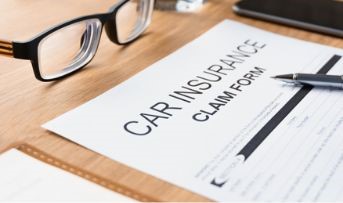
Top reasons for receiving a partial settlement from a car insurance claim
Insurance is an effective mechanism that protects the insured from the financial loss incurred due to damage to an asset. The prudent instrument protects high-value assets like vehicles, in the absence of which the victim has to shell out large sums of money to compensate for the damages to own property and third-party damages.
Despite the safety provided by online car insurance and its allied merits, sometimes the insurer does not approve a complete settlement, leading to being partially compensated. With proper knowledge regarding the procedure, related proofs, and some tips to remember while making claims, it is possible to receive a complete car insurance settlement.
Reasons for partial settlement:
Comprehensive car insurance is the easiest way to ensure that the insured is covered for maximum damages and receives the entire claim amount. If you haven't purchased comprehensive car insurance, you may encounter only a partial settlement for the following cases.
1. Depreciation:
Loss of value of a car due to wear and tear and usage is an inevitable factor that is considered while paying out claims. Damages to parts, including fibre and glass parts, tubes, tyres, etc., are only settled after considering their depreciated value according to the fixed depreciation rates and the age of the vehicle. A zero depreciation cover can help supersede this clause, but several conditions must be considered to avail of its benefit.
2. Partial car insurance coverage:
A partial cover protects the insured from the financial burden of third-party damages and has fewer inclusions while being less expensive than the latter. The policy restricts customisations and is ideal for infrequently used or old vehicles. The policy excludes NCB and its own damages, limiting its scope and increasing the financial burden on the insured.
3. Policyholder negligence:
Negligence while driving is a major cause of accidents. Suppose your insurer suspects that the driver was under the influence, negligent of general driving safety norms, or holding an invalid driver's licence at the time of the accident. In that case, your claim may be rejected or partially settled, depending on the severity of the issue and the claim amount.
4. Lack of proof:
It is essential to submit valid proof of the accident while filing a claim. With inadequate evidence, the insurer may not process the whole claim amount. Pictures of the accident site, eyewitness testimonies, and immediate filing of an FIR are some of the required proofs asked for by the insurer.
5. The car is used for business purposes:
If the insurer discovers that your personal car was used for business or commercial purposes at the time of the accident, you might not get a 100% claim or even a denial of the claim by the insurer.
Tips to speed up the claim settlement process:
While there is no fixed way to guarantee complete settlement, by following the below stated steps, you can ensure the fulfilment of your responsibilities to ensure that you receive the highest amount of claim possible.
1. Initiate the settlement process immediately:
Starting the process immediately after the accident is vital to ensure a quick settlement. It is ideal for raising the claim within seven days of the accident.
2. Keep all the relevant paperwork ready:
Each payment processed to rectify the effects of the accident, including maintenance of the car or replacement of parts, medical bills, the FIR copy, etc., should be maintained and provided to the insurer as proof.
3. Negotiate your demands:
Before reaching the final settlement, which you must ensure is in writing from the insurer, recheck if the amount is justified. Do not refrain from negotiating the sum with adequate reasoning. Consider seeking the help of a legal professional to make the process faster and ensure that your demands are satisfied.
When purchasing conventional or online car insurance, it is critical to read the fine print to ensure awareness regarding all the inclusions so that you can raise proper claims appropriately to settle at the earliest.
Click HERE to buy online car insurance.
Disclaimer: The information provided above is for illustrative purposes only. To get more details, please refer to policy wordings and prospectus before purchasing a policy.

Seeking to opt for a surrogate mother? Prepare to purchase health insurance
In India, as in the rest of the world, countless single people and couples want to start a family. However, not everyone has the same level of luck, and natural conception may not be an option for certain men, women, or couples. Thus, surrogacy is viewed as an excellent option for resolving this issue.
However, there are several potential problems when deciding to go through with surrogacy. To safeguard intended parents' rights and surrogate moms, the Indian government has enacted new surrogacy legislation, which indirectly impacts online health insurance companies. Keep reading to find out what the law in India says regarding surrogacy.
The Surrogacy Regulation Act in India.
Surrogacy is a burning issue in many parts of the world, considering their complex surrogacy laws. Before commercial surrogacy was banned in 2015 in India, surrogates in India used to suffer victimisation due to the lack of protection by law. It means they had limited support from the law or any other form of government to protect themselves. Plus, they were to follow either the Supreme Court's lead or the advice of the Indian Council of Medical Research.
However, The Surrogacy Regulation Act came into force on January 25, 2022, ensuring fertility services' safe and ethical practices.
Who can get surrogacy?
A surrogate mother must be in good health and between the ages of 25 and 35. She must have been married at least once and raised a child alone. She must also be a close relative of the intended parents. A woman can only serve as a surrogate once in her lifetime under the new Indian surrogacy rules, down from a maximum of three times under the old law.
Regulatory framework for surrogacy in India.
There are two sorts of surrogacy: traditional surrogacy and gestational or host surrogacy. Artificial insemination with the father's sperm is the traditional method. It establishes the surrogate as the child's actual mother.
An embryo created via in vitro fertilisation is implanted into a surrogate mother in gestational surrogacy. It is widely held that gestational surrogacy is simpler than traditional surrogacy, which has led to increased cases involving gestational surrogacy.
Following is a summary of the recent legislation regarding surrogacy regulation, effective as of January 25, 2022.
1. Commercial surrogacy banned:
Commissioning parents in the legally permitted altruistic surrogacy arrangement are responsible for covering the surrogate's medical expenses and providing health insurance coverage. Initially, only commercial surrogacy was legal in India. Earlier, commercial surrogacy compensated the surrogate mother for her services.
2. Health insurance proof becomes mandatory:
Couples who choose surrogacy to have a child must pay for the surrogate mother's health insurance for three years. The IRDA must approve the insurer following the Insurance Regulatory and Development Authority Act requirements. The sum insured must be sufficient to cover all costs incurred by the surrogate because of difficulties emerging during and after the pregnancy.
3. Additional protection for the surrogate mother:
The surrogate mother can end the pregnancy at any time during the surrogacy arrangement. The permission form format to be obtained from the surrogate has also been changed.
The couple must file an affidavit guaranteeing payment of expenses of the surrogate mother, including medical care in the event of illness or the surrogate mother's death and compensation for other losses.
The new surrogacy rules in India are intended to protect the rights of surrogate mothers by guaranteeing them access to online health insurance companies and policies if any difficulties arise during the pregnancy. While this is a positive development, India still has a way to go before we adequately safeguard the rights of surrogate mothers.
Click HERE to buy health insurance if planning for surrogacy.
Disclaimer: The information provided above is for illustrative purposes only. To get more details, please refer to policy wordings and prospectus before purchasing a policy.

Do senior citizens have to wait longer for their health insurance claim settlement
Health insurance policies are a useful tool to tide over any medical contingencies. It is essential for people of all ages, especially senior citizens, to purchase individual or family health insurance that can cover expenses incurred due to hospitalisation or any other allied medical costs. Its importance is only increasing as the medical inflation trends in India increase each year.
We know that age increases the risk of hospitalisation and medical expenses. This creates the necessity to purchase the best-suited comprehensive plan for senior citizens in the family. This article discusses the ideal period for filing a senior citizen’s claim and the time it takes to settle.
The ideal period for filing health insurance claims:
The period of filing the claim is essential in determining the time it requires for processing. Therefore, one must take all the necessary measures to facilitate a speedy claim settlement to benefit from the insurance policy.
Ideally, the insured should file their claim within two weeks for reimbursement claims. This is not a general time frame, as different policies have different time limits. However, claims filed after two weeks of hospitalisation are likely to be rejected or settled later, depending on the case.
Average health insurance claim settlement time:
As per the surveys and research done by the insurance industry, health insurance claims made by senior citizens take 28 days to settle compared to claims made by policyholders younger than 60 years, which take 23.2 days. These results have stirred up interest in the discussion to find the cause behind the delay.
The surveys also state that even the proportion of claim settlements is lower concerning specific conditions like diarrhoea, cancer, or prostate enlargement. However, it is the opposite when related to coronary heart disease. While this may seem alarming to those who have purchased health insurance in India for parents over 60 years, there are simple ways to avoid this.
1. What causes the delay in claim settlement for senior citizens?
The primary cause for the delay in claim processing is the delay in filing a claim. It is essential to ensure that the claim is filed and processed at the earliest opportunity. The findings state that senior citizens may take a while to file claims for numerous reasons, which may cause delays. To avoid late results, senior citizens must file a claim within a week or two and get assured of timely action.
2. A simple tip to ensure timely claim settlement:
It is often seen that young adults purchase health insurance in India for parents not just to protect them from bearing the burden of substantial medical bills but also to file for tax deductions.
However, to claim its primary benefit, it is essential to file claims on time. Since the elderly may require more time to do so, help from the hospital, staff, or relatives to file the claim in time will ensure that it is settled within 23.2 days instead of 28 days.
Carefully read the terms and conditions of health insurance in India for parents that specify information dedicated to senior citizens about the different inclusions and exclusions of the policy. Since medical bills and the risk of falling ill are greater at older ages, it is necessary to be fully aware of the benefits of different policies and file claims within the stipulated period. Help the senior citizens with a good life and healthy well-being!
Click HERE to buy the best health insurance in India
Disclaimer: The information provided above is for illustrative purposes only. To get more details, please refer to policy wordings and prospectus before purchasing a policy.

Everything you must know about theft insurance in India
We have discussed various types of insurance on this forum: health, personal accident, general, home, health, two-wheeler, motor, and many others. As a consumer, the most important role you need to play is to be aware of the purpose and the benefits of the insurance you are looking for or are ready to purchase. Have you ever wondered about what to do in case of burglary and theft of your possessions with a high financial value? Is there any insurance that helps you cover the costs of the properties or possessions against burglary, stealing, robbery, and other types of theft?
This blog will discuss everything you must know about theft insurance in India, including what kind of losses it can help you compensate for, the claims, benefits, etc. In this space, we will shed light on all the information you should know before you get in touch with an insurance provider or an insurance agent to purchase a theft insurance policy.
1. We are getting started with the basics:
Let the first point cater to the question- What is theft insurance? Theft insurance comes in handy against burglary, stealing/robbery, and other types of theft. It protects against the loss of your valuables in the points mentioned above.
Theft, which will be significantly used in this blog, refers to all kinds of stealing/robbery activities. At the same time, burglary indicates the act of trespassing on someone’s property forcibly and taking away their possessions illegally.
2. Why should you have theft insurance:
Now that you know what theft insurance is, you need to understand the more profound answer to why you need theft insurance. To attain protection against such incidents, it is a good idea to have a theft insurance policy in place. Apart from home, if you own a shop or an office space with items of high financial value, a theft insurance policy helps you recover losses caused by such illegal acts on your property’s premises.
3. A note for you to remember:
You need to be aware of the difference between theft and burglary. Both these illegal acts have their respective covers under theft insurance and burglary insurance plans. To claim theft, you need concrete proof of non-consensual/not forceful and non-violent entry/attempts into the premises of your home or other properties.
Meanwhile, to claim burglary, you need to have solid proof of violent and pushing/forceful attempts to enter the premises to accomplish the burglary. Insurance plans cover theft and burglary, so you can explore all your options with your insurance provider, keeping the difference between these two threateningly illegal activities in mind.
4. What type of coverage and benefits are we talking about:
Always read all the terms and conditions of the insurance policy carefully, which will help you analyse and get more insights into the benefits and coverage limitations.
Theft insurance covers the risks and losses due to damage done by theft in your home or other spaces that you own. The insurance premium is decided based on the history of the claims made, the type of possessions, and the security measures within the property.
5. Limitations you must be aware of:
You will not be compensated for the theft insurance policy under the conditions which have been mentioned below:
● Silver, gold, and other high-value metals
● Hard cash
● Items stolen by members of the family
● Share certificates and possessions stolen by employees and house help
● Thefts that occur during stressful periods like wars, riots, natural disasters, calamities, terrorist attacks
● Absence of security or leaving the possessions uncared for/unlocked on your premises
● Forged theft acts
You must purchase the right theft insurance policy by exploring your options, talking to the insurance provider, and finalising the policy that caters to your needs in the best way possible. Reliable insurance will protect you against monetary stress in light of such unpredictable and dangerous activities.
Click HERE to learn more about purchasing a theft insurance policy.
Disclaimer: The information provided above is for illustrative purposes only. To get more details, please refer to policy wordings and prospectus before purchasing a policy.
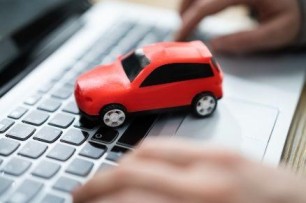
What are the benefits of purchasing motor insurance online
The world is adapting to digitisation, resulting in convenience and efficiency with the power of technology. The insurance industry has adopted various new and technology-driven concepts to ensure better customer support. Most official activities turned digital during the last two years due to the pandemic.
But many people believe that the online service mode is not very bankable, be it shopping, online payments, or online insurance. Even today, people choose the physical method because they believe it is more reliable and effective.
In this article, we will bust some myths and talk about all the benefits of online insurance and why you should buy motor insurance online.
1. No third party or agent is required:
One of the most significant benefits of buying motor insurance online is that you do not need an insurance agent to facilitate the process. When you purchase insurance from an agency offline, the insurance agent helps you identify all the covers in your insurance policy or any additional add-ons you might require.
When you switch to online insurance, you eliminate the need for this third party as all the information you require is readily available online. You can also compare various insurance providers and their costs. The cost you save on paying your insurance agent can be used for buying add-ons on your premium.
2. Ditch the paperwork:
Online insurance companies are making completely paperless purchases with bare minimum paperwork. All your IDs are digitally scanned and uploaded to your insurance portal, and the proposal form is also filled digitally. The digital copy is later forwarded to you for future reference. When you buy motor insurance online, you skip the hectic paperwork and contribute to a greener environment.
3. Instant policy:
The process of buying motor insurance online is faster compared to the physical mode. One can achieve everything instantly, from evaluating the policy holder’s profile to resolving the claim if opting for online motor insurance. All the documents and forms can be filled out from the comfort of your home and get instant policy issuance.
4. Compare online:
Since evaluating every motor insurance policy can be cumbersome when done physically, opt for an online comparison. Various websites with good customer reviews will enable you to make informed decisions on the different kinds of insurance policies, their premium amounts, and the overall customer experience.
Not only will these websites help you in comparison, but there are insurance calculators on various websites that can give you an approximate estimate of the total insurance cost. Read through the company’s website thoroughly to choose a tailor-made insurance policy. When you compare prices online, you know more about different deals available in the online market.
These are a few ways an online insurance policy is a better option than a physical one. Irrespective of the kind of insurance you buy, it is essential to remember that all your needs are met with your current insurance policy. Add value to your bike riding experience by investing in good motor insurance. Motor insurance is an intelligent way to ensure that you are safeguarded against accidents and damages and all the other expenses that your vehicle's maintenance might require. For your next renewal, buy motor insurance online to save money and time.
Click HERE to buy motor insurance online.
Disclaimer: The information provided above is for illustrative purposes only. To get more details, please refer to policy wordings and prospectus before purchasing a policy.

Protect your personal belongings with a theft add-on to your bike insurance
A comprehensive bike insurance policy protects you in case your bike gets stolen. It ensures the receipt of the total insured value or the IDV of your bike from the insurance company. This way, two wheeler insurance will reimburse you when you raise an insurance claim.
But what happens to your expensive belongings kept in the bike, such as your bag or wallet, that have disappeared along with your two-wheeler? Worry no more! You can now buy an add-on theft cover while purchasing two wheeler insurance online or offline to protect your personal belongings.
The benefit of theft add-on.
A theft add-on feature for your bike’s comprehensive insurance policy enhances its value by covering your personal belongings’ value. You can purchase this add-on cover while buying new two wheeler insurance online India or renewing the existing policy. The insurance company becomes liable to pay the amount mentioned in the add-on cover. The depreciation amount is deducted to date for your personal belongings in case your bike gets stolen.
Documents required.
You must provide the following documents to raise an insurance claim:
1. An FIR filed with a police station immediately after your bike is stolen
2. Original invoice of the items for which you are staking a claim or proof of ownership of the belongings stolen
You must inform the insurance company of the theft within 30 days of the bike being stolen. The insurance company will not entertain any claim post this period. Also, insurance companies will not accept claims for items not meant for personal use. It means the lost item should not be for trading or commercial purposes. Also, the item you are claiming should be inside or on the bike when it gets stolen.
Advantages.
Opting for a theft add-on to your bike insurance has several advantages:
1. Only this add-on assures you of reimbursement for the loss of your personal belongings present in your bike in case it is stolen.
2. This add-on protects your hard-earned money. You can have complete peace of mind and leave behind your belongings on your bike without worrying about their loss.
Limitations.
There are a few limitations of theft add-on to your bike insurance too.
1. Depreciation:
Insurance companies charge high depreciation for your valuables. The minimum percentage of depreciation charged is 20% which can go up to 80% for items over four years old. Hence, you may get a minimal amount for your lost personal belongings.
2. Documentation:
The formalities required to support your insurance claim for your personal belongings are cumbersome. For example, you may not have proof of ownership of all the items stolen with the two-wheeler and may not get the claim passed for them.
The theft of your bikes is not in your control. A standard insurance policy will only provide compensation for your bike and not your valuables. Opting for a theft add-on to your bike insurance is an intelligent choice. It has more advantages than limitations and will protect the valuables in your bike.
Similarly, opting for two wheeler insurance online India is a great choice. It minimises paperwork, saves time, and is much more convenient than buying an insurance policy through conventional channels. You can make an informed choice by comparing similar policies of all the service providers and choosing the best amongst them. Hence, ensure your peace of mind by buying your two wheeler insurance online India policy.
Click HERE to buy two wheeler insurance India policy.
Disclaimer: The information provided above is for illustrative purposes only. To get more details, please refer to policy wordings and prospectus before purchasing a policy.

Buying the best health insurance for your family decoded
Irrespective of age, health is easily one of the most overlooked aspects that are ironically detrimental to the quality of one's life. A few decades ago, maintaining health was not a matter of discussion as it is now, mainly because of the outbreak of viral infections, lack of exercise, and poor eating habits.
People of all age groups face health issues, the old due to their age and the young due to stress. The inconsistent lifestyles have become an open invitation to several health problems. And, as the severity of health conditions increases, it impacts your finances.
In unforeseen situations where you or your family may require to be hospitalised, a health insurance policy for family protects you from the rapidly rising medical cost. Managing finances during health emergencies can be daunting, but with the right insurance plan, you can handle everything well.
While it may seem complicated, keeping these factors in mind can help you buy the best-suited health insurance policy for family!
The need for family health insurance:
While most look at a health insurance policy for family as a means to claim tax deductions, it serves a far greater purpose. Medical emergencies are not preplanned, and without a comprehensive health insurance policy, you will have to pay for the expenses out of pocket.
These medical bills are almost in large amounts that are sure to vent your savings massively. Instead, upon paying a comparatively minimal premium annually, you can protect your spouse, children, parents, and parents-in-law under the same policy that covers any possible medical expenses.
How to decide on policy coverage:
While a health insurance policy for family is a one-stop solution to cover the entire family, it may not be enough based on your situation. If you are newlyweds or a young family, a family floater plan may suffice for your case.
Since medical emergencies are relatively infrequent at a young age, the premium is lower, and the cover is adequate. With time, as your family grows and the insured members' age increases, it is essential to take out individual insurance specifically catering to their health needs.
How much should your policy be for?
As medical inflation continues to rise, adjustments need to be made to these figures to accommodate any potential situations where a claim may need to be made. A cover of 5 lakhs should be the minimum for families with young adults. Since risks are fewer at this stage, premiums are also lower, and the amount is adequate to cover general medical bills.
With the increase in the insured members' age, the policy amount and premiums also increase. However, they do not rise proportionately, making it easier to purchase a higher-value plan at a relatively low increase in the annual premium amount. It is also necessary to factor in living costs and adjust these figures accordingly.
What is covered, and what is excluded?
While they are a convenient means of protecting your entire family without having to pay individual premiums for every member, there are certain exclusions to a health insurance policy for family that you must be aware of.
They generally include psychiatric medical expenses, provide annual health check-ups to all covered members, and even cover maternity-related costs. However, babies younger than 91 days and children over the age of 18 years cannot be included under family floaters. It also excludes any pre-existing medical conditions for which a separate cover needs to be purchased. Health insurance policy for family also has a waiting period, during which the insurance providers do not compensate for any expenses incurred.
A health insurance policy for family is a straightforward tool that protects your entire family at a low premium value from any medical contingencies. By attentively checking the inclusions and exclusions of the policy, one can ensure comprehensive cover for their family to combat health emergencies without any worries about finances.
Click HERE to buy the best health insurance policy for family.
Disclaimer: The information provided above is for illustrative purposes only. To get more details, please refer to policy wordings and prospectus before purchasing a policy.

Move-over braces, and clear aligners are the way forward
As we progress, we are moving towards better options in all aspects of life. Advancements in medical science over the last few decades have resulted in ground-breaking discoveries and the latest med-tech developments. The constantly evolving world of medicine has resulted in innovation in the dental industry. This discovery came in the form of clear aligners, which are the latest trend. Orthodontists globally suggest them as they are better suited for many reasons, making them preferred over traditional braces. But why are they so popular? What makes them different? We will discuss them all in this article.
Clear aligners are still an upcoming trend that many may not know. Due to this, we will help you walk through these unique orthodontic devices and how they straighten your teeth. Regardless of your dental problems, you should always have the best health insurance policy in India to cover all your medical expenses. Now, let's understand the benefits of clear aligners.
What are clear aligners?
Clear aligners can fix misaligned or unorganised teeth placements. After conducting an intraoral scan, orthodontists can determine the problem with your teeth and possible solutions. Made with cutting-edge 3D technology, each aligner is customised according to the patient's needs. The aligners move the teeth into place gradually without causing pain. The time taken to do so depends on the unique condition of every individual.
What are the benefits of clear aligners?
1. Maintains oral hygiene:
With clear aligners, you can maintain your dental hygiene without any hassles. You can remove them as per your will and then brush your teeth meticulously without fear. On the other hand, you need to clean carefully when you have your braces on. Braces can cause dental problems as you cannot brush your teeth well. It can lead to other oral problems like bad breath and cavities.
2. Freedom to eat or drink anything:
Braces bring several dietary restrictions and place constant pressure on your teeth. However, you will feel nothing with aligners, as they are removable. You can eat or drink to your liking.
3. Practically invisible:
It is very difficult to spot clear aligners. They are almost entirely invisible. This means that you need not inform anyone about your orthodontic treatment. In stark contrast, metal braces are easy to notice. This can be a matter of embarrassment for many adults and teens.
4. No operational hassles:
The whole process of getting metal braces done can be tedious. It requires regular monitoring and tightening to keep you comfortable. If any wire is left unopened, it can lead to ulcers in your mouth. With clear aligners, this is not a problem. It does not require any tightening during doctor appointments.
5. No obstruction to teeth whitening:
Metal braces can force you to compromise on your dental hygiene. This can lead to the loss of a pearl-white smile. You may also notice plaque formation as a result of bacteria growth. If left untreated, you may have decayed teeth, bleeding gums, and other problems. To avoid this, switch to clear aligners, which pose no threat to your white teeth in any way. You can brush them whenever you want and not fear being cautious around metal wires.
Clear aligners are the future of dental science. They are highly effective, consume less time for fitting, and show results sooner than metal braces. With advancing times, most people will switch towards clear aligners to treat their teeth. In any medical situation, purchasing the best health insurance policy in India may help you cover the procedure's cost.
Click HERE to invest in the best health insurance policy in India.
Disclaimer: The information provided above is for illustrative purposes only. To get more details, please refer to policy wordings and prospectus before purchasing a policy.

Effective ways to treat frozen shoulder and ensure a speedy recovery
Many of us feel shoulder pain when we try to remove our wallet from the back pocket or reach for something overhead. If you experience pain or stiffness in your shoulder joint while moving or resting, you most likely have a frozen shoulder.
Many treatment options, such as pain control medication and simple exercises, are available for frozen shoulders. If you diagnose a frozen shoulder early, you can treat it more quickly with the appropriate care.
Let's first understand the frozen shoulder and its symptoms for an early diagnosis and treatment!
In the shoulder, three bones named the scapula, clavicle, and humerus join together to form a ball and socket joint. These bones are surrounded by tissue that holds everything together. When a person suffers from a frozen shoulder, the tissue thickens and hardens, causing mobility loss. It also causes scar tissue formation, further restricting the shoulder's movement.
Frozen shoulders, also known as Adhesive Capsulitis, can cause discomfort in the arms, making simple activities such as taking a shower or getting dressed almost impossible. More symptoms of a frozen shoulder include stiffness and loss of freedom of movement. Depending on the severity, these symptoms may last from 18 months to three years. In some cases, people with frozen shoulders regain their mobility after three years without needing treatment.
However, it is best to see a specialist and get some relief from the pain. You can use several treatment methods and tips for fast recovery.
What causes frozen shoulders?
Knowing the cause helps you reduce the chance of developing a frozen shoulder. The main causes include inflammation, scarring, shrinkage, and thickening of the shoulder tissue that encloses the joint.
People with medical conditions such as chronic shoulder arthritis, diabetes, and who have recently undergone breast surgery are at more risk of frozen shoulders. Some shoulder injuries also cause frozen shoulders. Did you know that inactivity of your shoulder can result in frozen shoulders? Women are more likely to experience frozen shoulders than men.
If you think you are at risk of a frozen shoulder or suffering from it, you should get health insurance to cover your medical treatment in the future. You can instantly find and choose the best health insurance policy among several online health insurance companies.
Treatment for frozen shoulder.
The effective treatment options for a frozen shoulder include;
● Physical therapy:
It involves the stretching of the shoulder joint to regain lost movement. You need to exercise daily for a few weeks to nine months to experience a full recovery.
● Medication:
Doctors recommend taking painkillers and steroid injections to reduce joint inflammation and pain. You should consult your doctor before taking painkillers, as not all painkiller medications suit everyone.
● Home care:
Getting adequate care at home is necessary for quick recovery. You can use a hot or cold compression pack to relieve pain.
● Surgery:
If your condition does not improve with the above treatment methods, your doctor may suggest surgery. Surgeons use manipulation surgery to stretch and release the stiff tissue of the joint.
Frozen shoulders are a painful condition, and their treatment needs adequate care. Understanding the frozen shoulder and its cause is crucial to reduce the risks. Moreover, recovery from a frozen shoulder can take less time with proper treatment but can be expensive for most people. You can save yourself from paying hospital bills and other treatment costs with the help of health insurance. Several online health insurance companies offer insurance policies that provide specialised coverage for critical illnesses and surgeries.
Click HERE to purchase the best plan from the online health insurance companies for you and your family.
Disclaimer: The information provided above is for illustrative purposes only. To get more details, please refer to policy wordings and prospectus before purchasing a policy.

Let's understand the health benefits of cycling for elders
Cycling is a fun exercise with many benefits for everyone. The younger generation is fascinated with cycling adventure, and they usually ride their bicycles in their vicinity and even plan passionate cycling tours to thrilling destinations. But did you know that cycling also benefits and excites older adults? It is an excellent way of keeping older adults fit, healthy, and engaged without putting too much pressure on their bodies.
*Pro-tip
If you want your parents to be protected from the possibilities of heart diseases and cancer, make them indulge in cycling as it helps reduce the risk of these adverse medical conditions. Another great way to ensure a healthy lifestyle for your ageing parents is to buy the best health insurance in India and provide vital financial support during medical emergencies.
Now, let's see some interesting health benefits elders can enjoy by cycling regularly.
1. Boost the immune system:
Elders have a weak immune system; as they grow old, they produce fewer T-cells, essential to fight against diseases. Cycling helps maintain the production of T-cells in older people, which boosts their immune system. It also helps older adults to preserve their strength and muscle mass to stay energetic throughout the day and feel less lethargic in doing any activity.
2. Good for the heart and body:
Cycling is excellent for the cardiovascular health of the elderly. It reduces the risk of severe health conditions due to heart disease by 45%. The elders who ride bikes regularly get their cardiovascular health increased by 3 to 7%. Riding a bicycle for 30 minutes also helps reduce the risk of several other medical conditions, like kidney disease, diabetes, and colorectal and lung cancer.
3. Slower ageing:
According to a study, high intensity cycling or other exercises can result in slower ageing. Older adults can enjoy the anti-ageing benefits by setting up a daily cycling routine. It is essential to maintain mitochondrial capacity as its decline can lead to physical deterioration. Cycling is excellent for increasing mitochondrial capacity.
4. Deal with fat:
Excessive accumulation of fat due to lack of physical activity can increase the risk of health problems like stroke, type 2 diabetes, and heart attack in the elderly. As they grow older, exercising to lose weight becomes a little complicated. But cycling doesn't put much pressure on the body. Elders can easily lose fat and weight with regular cycling with less effort and maximum benefits.
5. A good stressbuster:
Stress is a general issue that bothers younger and older adults for several reasons. This stress becomes the underlying cause of several other health complications. Hence, it becomes crucial to control stress to improve an individual's mental and physical well-being. Group activities like cycling are enjoyable as cyclists can meet new people with similar interests. It helps elders find companionship and keep themselves cheerful.
6. Good for joints:
Walking and running become challenging as people get older. Seniors usually suffer from injured joints, and putting too much pressure can worsen their condition. Cycling is ideal for elders as it puts less stress on their joints. According to a study, cycling improves the condition of knee pain and osteoarthritis in older adults.
7. Build strength and stamina:
Cycling helps seniors build knee muscles and improve their stamina. It is a whole-body workout that helps older adults maintain their strength and endurance. It also enhances the mobility of individuals and helps them keep their bodies in the best shape.
Once you understand the significance of cycling, encourage your elderly to get involved in this activity. It helps elders meet new people, essential to improving their mood, and gives them a new direction to live their retirement life with enthusiasm.
Indeed, cycling improves the health condition of elders and provides them with the reward of a fitter lifestyle. Gift the elderly with the additional coverage of the best health insurance in India. Insurance supports financially by covering the diagnosis, hospitalisation, medical, and ambulance fees, releasing massive stress from older adults to deal with their health complications.
Click HERE to buy reliable health insurance in India for elders.
Disclaimer: The information provided above is for illustrative purposes only. To get more details, please refer to policy wordings and prospectus before purchasing a policy.

Lower abdominal pain: It may be a sign of appendicitis
Abdominal pain is a prevalent issue of concern worldwide. The common causes of abdominal pain are gas, indigestion, and constipation. They don’t require urgent medical care, and you can get relief in a few hours. However, there may be more serious causes of abdominal pain, like urinary tract infections, kidney stones or infections, and even appendicitis which can be serious.
These are some causes for which you must seek immediate medical help. If the cause for your lower abdominal pain is an inflamed appendix, more often than not, you may have to undergo appendix surgery. The surgery cost is high, making it essential to buy health insurance online. While health insurance covers medical expenses, taking precautionary measures and being aware of its symptoms is necessary.
Let us understand lower abdominal pain caused because of appendicitis more clearly.
What is appendicitis?
Our large intestine has a pouch-like structure at its beginning, known as the appendix. The appendix sometimes becomes inflamed and fills with pus, causing immense pain. This situation is called appendicitis. It is treated with antibiotics and must be removed through surgery.
You should not ignore severe and persistent lower abdominal pain as it may be a sign of appendicitis. It can be dangerous and result in a ruptured appendix that can cause severe infection when ignored.
What are some common symptoms of appendicitis?
If you regularly suffer pain in your right lower abdomen area for a prolonged period, it is time for you to visit a good doctor. Also, the severity of pain eventually increases if not diagnosed early. Other symptoms of appendicitis include nausea, vomiting, fever, and loss of appetite.
What are the associated risks of appendicitis?
When the appendix becomes blocked and inflamed, bacteria multiply in it. The appendix can start swelling, along with pus formation. This causes painful pressure in the lower abdomen. It can also block blood flow. Not only does appendicitis cause immense pain and trouble, but bacteria can spill into the abdominal cavity with the bursting of the appendix. This can result in developing life-threatening infections.
The pain caused by appendicitis is usually so severe that it can even wake us from sleep. It can worsen within just a few hours and may require immediate hospitalisation.
How is appendicitis diagnosed?
There is no specific test to diagnose appendicitis. The doctor first understands the symptoms and your medical history. He will physically check for swelling or rigidity of the lower right part of the abdomen. He may also perform a digital rectal examination.
The doctor may ask you to get a few more tests done to ascertain the occurrence of appendicitis. This may include blood tests, urine tests, and abdominal imaging tests.
How to prevent appendicitis?
There is no way by which we can fully prevent appendicitis and the subsequent pain that it causes in the lower abdomen. But having a high-fibre diet can help reduce the chances of appendicitis. Additionally, increase the intake of fresh fruits and vegetables, lentils, beans and other legumes, split peas, brown rice, whole wheat, oatmeal, and whole grains. Consider the intake of some fibre supplements with the approval of your general physician to ensure a well-balanced diet.
One should never ignore lower abdominal pain as it can be a sign of appendicitis. The pain and uneasiness can lead to fatal infections. Since such ailments are beyond control, one should focus on safeguarding their health. Buy health insurance online with comprehensive protection to cover the costs of treating appendicitis without feeling a pinch on one’s wallet.
Click HERE to buy health insurance online policy.
Disclaimer: The information provided above is for illustrative purposes only. To get more details, please refer to policy wordings and prospectus before purchasing a policy.

Understand these tips if planning to send your cargo overseas
With globalisation, the world has become a closely-knit village. It isn't easy to imagine a life without an international supply of goods and services that provide both convenience and luxury. However, while the flow of capital and ideas has been facilitated with the ease of internet transmission, transporting goods and services continues to take time and money.
With the expansion of international trade and travel, there is great emphasis on transporting goods most cost-effectively in the least amount of time. In such a backdrop, freight companies have seen an increased demand for overseas cargo shipments. They pay great care to ensure that your cargo reaches its destination safely by taking adequate measures to minimise risks.
On an individual level, you can ensure that the cargo is protected against any incidental damages by following the tips given below.
1. Proper packaging:
For an international shipment, the most significant issue is the risk of damage while in transit. It is best to take preventive methods while packing the goods instead of blaming the freight company after the loss has been faced. It is essential to choose the right packing supplies and ensure they are securely packed.
Also, consider the handling of the cargo while packing. Since it is known that goods are stacked on top of one another and moved using transporting vehicles like forklifts, ensure that your packaging is resistant to rough handling and is stackable. Keeping these in mind will ensure that your goods remain safe and your packages are easy to deliver.
2. Attention to fragile items:
No matter how much emphasis is placed on fragile items, it is inevitable to discover minimal damage to such delicate goods. While there is no way to eliminate the risk, proper packaging can minimise such losses.
Ensure that the package indicates the delicateness of items inside so that it is handled with care and cushion using adequate protective supplies. Consider purchasing insurance for fragile items offered by freight companies, similar to buying a fire or marine insurance India.
3. Internal cushioning:
It is known that freight companies transport large volumes of cargo daily. With such large numbers, it is difficult to ensure that each package is transported without damage. Therefore, customers should take preventive measures at the packing stage to minimise damages by providing adequate internal cushioning to the goods using bubble wrap, packing peanuts, and extra supplies to ensure the structural safety of the package.
4. Weight limitations:
Transportation charges are based on the weight of your cargo. Ensure you are not penalised by weighing your packages appropriately while filling out documents. A wooden crate may add to the weight of your parcel and increase shipping charges, but it ensures that your goods reach their destination securely.
5. Customs and Duties:
Each country has its own set of rules regarding imports. Ensure that your cargo fulfils the criteria of the destination country, the necessary documentation is filed in the proper order, and prescribed fees are paid.
6. Mode of transportation:
Factor in the cargo's nature, fragility, perishability, and delivery due date before selecting a suitable mode of transport for the goods to be delivered. For example, shipping by sea, although takes longer but is a cheaper option. By considering such factors, it is necessary to determine the best route of transport.
7. Proper insurance:
Since your cargo is set to travel long distances in uncertain conditions, it is best to purchase an insurance policy for your shipment to prevent shouldering any loss of goods in transit. Irrespective of the mode of transport, several policies like air cargo insurance and marine insurance India can minimise such losses.
International transport of goods has become an inevitable part of the modern supply chain. While freight companies are considered risky, however, with mechanisms like marine insurance India, you can share such risk with the insurer and safeguard your finances. Keep the above tips in mind, purchase the right insurance, and get ready to send your cargo overseas.
Click HERE to buy the reliable marine insurance India policy.
Disclaimer: The information provided above is for illustrative purposes only. To get more details, please refer to policy wordings and prospectus before purchasing a policy.

Best tips to secure your child’s future with proper financial planning
The foremost priority for any parent is to make their children financially secure by the time they turn eighteen and are ready to take on the world. In the growing years, your children may even decide to start up some business of their own for which they will require funds too. Also, you must consider the high living costs if your child decides to study or work in big cities like the metros. It is crucial to allocate funds to aid your child's education at foreign universities, considering the boost in international education opportunities.
Efficient financial planning is the key to being future-ready and meeting all expenditures to secure your child's future. We have designed our guide to help you plan your finances in the most appropriate way to ensure your child's bright future.
1. Start early and set your goals:
The first tip is to start as early as possible and set realistic and achievable goals. You should decide how much funds you will require to satisfy your child's aspirations. It need not be an exact amount; a close estimate will do. Calculate how much money you can save and put aside every month for your child from your current income.
2. Investing:
Investing your savings will make them grow; hence, you must decide where to invest this money. Ideally, your investment should be more in equity and less in safe-haven assets such as debt funds, fixed deposits, and gold, considering your long-term goals. Equity has the power to give you compounding returns over the years and grow your money exponentially. However, it is associated with risk.
Fixed deposits and debt funds will give you relatively lower returns, but they will be steady and safe. You must make smart decisions while investing your capital into these investment instruments.
3. Choosing the best schemes:
You will need some money for your child in the short term to meet her schooling and living expenses and more money in the long term for meeting her higher education expenditure. Allocate your investment between different asset classes accordingly and choose the best possible schemes available for the same. Invest in avenues that allow withdrawals without a long lock-in period to meet your short-term needs.
You can take the mutual funds route to invest in equity if you are not comfortable with investing in the stock market directly. Equity comes with many options, such as investing in different economic sectors, market capitalisation per your time horizon, etc. You can also buy government bonds and gold directly from outside sources.
4. Appropriate insurance coverage:
Insurance keeps your family secure in case you or your member meets with an accident. Hence, invest in a good insurance policy as per your individual need. What will happen to your child's future if something happens to you? Take a general insurance cover so that your children get fruitful benefits. Similarly, go for a mediclaim or comprehensive health insurance policy from the best health insurance company in India with a full family cover so that you are under no financial stress if anyone from your family meets with an emergency and requires hospitalisation.
5. Nominee appointment:
Never miss out on filling in the name of a nominee while investing anywhere. Fill in your spouse's name or a reliable third person, but do not leave the field blank. Only the nominee will have legal access to your investments in case of your sudden demise.
6. Regular review:
Review your investments regularly. If your investment is not performing as expected, change it to other investment options with higher returns. Similarly, keep checking your mutual funds' scheme performance and change it if it underperforms for a long time.
Proper financial planning will help you to secure your child's future. The above tips will keep you stress-free, and you will have a sufficient corpus ready by the time your child goes for her higher studies or is ready to start a venture. Reliable insurance coverage from the best health insurance company in India and good investments will be the perfect formula to turn your child's dreams into reality while being in their best state of health and well-being.
Click HERE to buy insurance from the best health insurance company in India.
Disclaimer: The information provided above is for illustrative purposes only. To get more details, please refer to policy wordings and prospectus before purchasing a policy.

Here is the list of superfoods to add to your kid's diet for better brain health
Raising kids is no picnic. Parents' entire world revolves around their children. Several aspects factor in their upbringing, including education, health, financial aid, culture, tradition, habits, and much more. Nutrition is one of the most critical quotients to take care of during your initial parenting years. Your children's health during the formative years determines several things about the upcoming phases in their lives and how they would reflect in their lifestyles. And amongst the various components of children's health is the development of their brain, which would then influence their learning capabilities, socialisation, co-curricular, ambitions, etc.
Catering to your kids' basic nutrition requirements is essential. But at the same time, have you ever thought about how different types of food can enhance your child's brain? How can it affect their mind and the abilities that come with it? We have the answers. This blog will provide a barrage of options to include in your kids' diets. So, here is the list of superfoods to add to your kid's diet for better brain health.
1. Berry merry:
Your child's diet should include berries rich in antioxidants (strawberries, blueberries, blackberries, cherries, etc.). They are an abundant source of vitamin C, reducing cancer chances in the later stages of life. The brighter and more vibrant the colour of the berries, the more nutrients they are believed to have. So, make sure you give your children the rainbow diet of berries without fail!
2. Yoghurt, please:
It is a snack proven to be rich in protein. Enhance your child's brain health by inculcating unsweetened yoghurt in their diet. Dairy products such as yoghurt are rich in substances like iodine, which has been scientifically proven to help develop your child's brain by improving its cognitive function and growth. Sufficient levels of iodine in your kid's diet can help reduce risks of cognitive impairment compared to children who are habituated to lower than required amounts of iodine.
3. Eggs are a must:
An immense protein source, eggs are essential to your child's diet. Egg yolk contains choline, a significant nutrient source aiding brain development. Eggs can be served in various forms-burritos, rolls, wraps, omelettes, poaches, etc., attracting children to eat without trouble. They also help in providing energy and strengthening the bones in the body, which would help in later stages of life by reducing the risk of the brittleness of bones and injuries.
4. Oranges all the way:
A very popular source of vitamin C, oranges are one of the children's favourite fruits. Besides being rich in vitamin C, they are also a huge booster for your child's cognitive health and development. They enhance blood flow when consumed in the form of juices, fruits, or foods. A boost in the blood flow when it reaches the brain increases nerve activity, thus improving the overall cognitive performance of the brain in the long run.
Other superfoods include beans, oats/oatmeal, fish (rich in omega 3), leafy greens like spinach and lettuce (rich in vitamin E and K1), cocoa, nuts, peanut butter, and many more.
The list of superfoods mentioned above includes food items readily available in the Indian markets and have high nutritional value for your child's brain and body. We hope that the options discussed above provide sufficient alternatives and reasoning behind why you should include these food items in your child's meals and how they enhance their brain health.
We just discussed how essential it is to take care of your children's brain and overall physical health. At the same time, it is also necessary to create an extra layer of protection for you and your loved ones' health against unprecedented circumstances. You must get a robust health insurance policy for family to combat such situations. With the introduction of digital services, you can get an online health insurance policy for family with all the relative information from the comfort of your home.
Click HERE to learn more about how you can buy a reliable health insurance policy for family.
Disclaimer: The information provided above is for illustrative purposes only. To get more details, please refer to policy wordings and prospectus before purchasing a policy.

Complete guide on choosing the best biker jacket to make your riding experience safe and stylish
Biker jackets are a must-have safety gear for bike-riding enthusiasts. They provide comfort, protection, and safety and help you make a style statement. Originally biker jackets were made from leather since they provided durability and insulation. However, in recent years, textile and mesh jackets have also evolved as good substitutes for leather in making biker jackets.
Here is a complete guide on choosing the best biker jacket to make your riding experience safe and stylish.
1. Safety:
The main function of a biker jacket is to provide the rider with safety and adequate protection in case you meet with an accident. It equips with a protective layer that a regular shirt or a t-shirt will not provide. Hence, go for a biker jacket that is strongly built to withstand the effect of impact or abrasion. Leather scores over textile or mesh in this department as it can withstand the effect of abrasion and will not tear even if you fall and are dragged on the ground.
A biker jacket should have adequate padding to absorb the energy from the impact and minimise injuries to the rider. Biker jackets are made to protect your spine, shoulder, and elbows to reduce the devastating effects of a serious accident. Some jackets are made with hard plastic armour to provide extra cushioning.
2. Durability:
A biker jacket will usually cost much more than your regular bomber jackets due to their build and quality. A biker jacket made of leather will be more durable than jackets made of textiles or mesh. Spending money on safety is a worthy investment, so make the right choice and the best riding jacket.
3. Comfort with the right fit:
A biker jacket should be comfortable and lightweight, along with being durable. Hefty jackets will make you feel bulky and uncomfortable over long bike rides. Correct fitting is crucial so that you feel comfortable in it. You can opt for jackets with removable soft inserts and use them as needed.
The jacket should allow adequate airflow, which will be helpful on a hot day. Also, the collars or arms should not flap while riding but allow the air to flow through so that the jacket does not become a distraction while riding. Remember that your bike and posture will significantly impact the fit of the jacket you need. While a regular, relaxed fit touring jacket can be great on a cruiser bike in which you need to keep an upright posture, the same jacket can be annoying and of poor fit if you have to ride a sportbike in a crouched position.
4. Style statement:
A biker jacket that lacks style is a big no for any biker. Your jacket should be designed such that you can make a style statement wherever you go. Race jackets or biker jackets should be colour-blocked and of vibrant colours to catch attention even from a distance. They should provide you with a sporty look. Some come with metal skid plates on the shoulder and elbow areas and most come with a reflective piping design to make your jacket look more stylish and provide safety.
A good biker jacket is similar to two wheeler insurance. Jackets save bikers from the impact of the accident, and two wheeler insurance provides them with adequate coverage and protection in case of a mishap. Invest in the best two wheeler insurance in India to be your saviour and true companion in unforeseen circumstances.
Click HERE to buy the best two wheeler insurance in India.
Disclaimer: The information provided above is for illustrative purposes only. To get more details, please refer to policy wordings and prospectus before purchasing a policy.

Here are the best ways to diagnose and treat gangrene
With the changing lifestyle and inconsistent routines, more and more people fall prey to various diseases. These diseases can be by the force of genes, environment, lifestyle, or a combination of all. All these diseases can contribute significantly towards the downfall of health. In the long run, it can lead to serious health issues.
One of these diseases is gangrene. This disease occurs when the tissues in the body die due to loss of blood supply by illness, injury, infection, or other health problems. Usually, the area of impact for this disease lies in the toes, foot, fingers, or limbs. When the condition is extreme, gangrene can also be present in muscles or organs. Different types of gangrene exist, and all of them need medical attention immediately.
Such diseases are highly prevalent in the world. You should protect yourself and your family members against these health adversities, especially look after your parents. To ensure safety, you can invest in the best health insurance in India for parents.
What are the symptoms of gangrene?
Here are the symptoms that you should look for in terms of gangrene.
● Severe pain
● Shriveled or dry skin
● Numb skin
● Inflammation
● Shiny or hairless skin
● Presence of blisters
● Fatigue
● Fever
● Discharge from the affected area
● Red, brown, or purple skin
What are the risk factors of gangrene?
The risk factors are:
● Presence of a weak immune system
● Diabetes
● Smoking
● Severe injury
● Artery disease
● Frostbite
● Obesity
How is gangrene diagnosed?
Once your symptoms are in the open, you must seek medical assistance immediately. Your doctor will ask you about all the possible symptoms and suggest a few diagnostic tests to confirm the disease. These are:
1. Imaging tests:
Imaging tests such as CT scans and MRIs are a great way of determining the spread of gangrene in your body. It also helps to know about possible gas build-up in the tissues.
2. Blood tests:
Blood tests are simple yet effective ways to diagnose gangrene. It helps to know the abnormalities in the blood and in looking at signs of possible infections. It is also based on the presence of WBCs or RBCs in the blood.
3. Cultures:
This is yet another way to diagnose the disease. A part of your tissue, blood, or fluid is taken as a sample. It is then viewed under the microscope to determine tissue damage.
4. Surgery:
It is an elaborate procedure that will help you determine the spread of gangrene in the body. It is suitable for the internal spread of the disease.
What are the ways to treat gangrene?
Every treatment for gangrene focuses on preventing infection spread, removing dead tissue, and total recovery. The ways and means to treat gangrene are:
1. Antibiotics:
Antibiotics are effective in preventing the spread of infection in the body. It can be taken orally or injected into the body through a needle.
2. Surgery:
Through surgery, the dead or infected part of the tissue is removed from the body permanently. It helps prevent the infection's spread to other parts of the body.
3. Oxygen therapy:
This method puts you in a special chamber with oxygen at a higher pressure than usual. It contributes to tissue healing and prevents bacteria growth.
These are the possible ways to treat gangrene successfully after you have been diagnosed with it. People with diabetes, especially the population above 40 years, are at a higher risk of gangrene and need to take extra care by regularly checking their blood sugar level and ensuring that it is controlled. Proper diet, enough sleep, less sugar intake, daily walking, and little physical exercise are needed to keep such diseases at bay.
Regardless, it would help if you always had your health insurance in emergencies. It would help if you buy the best health insurance in India for parents and secure their health with the right coverage for their age.
Click HERE to buy the best health insurance in India for parents.
Disclaimer: The information provided above is for illustrative purposes only. To get more details, please refer to policy wordings and prospectus before purchasing a policy.

Do you lead a team? Here are the ways you can inspire them to lead a healthy lifestyle
A healthy body caters to a healthy mind, resulting in higher efficiency and productivity at work. Therefore, it is in the best interests of any organisation to motivate its employees to stay fit and healthy. It will promote positivity in the workplace. Moreover, when the leader makes efforts for the health and well-being of the employees, it inspires the team to work harder and stay united as one family.
Here are some ways in which you can inspire your team to lead a healthy lifestyle.
1. Schedule a periodic doctor visit at the office:
The best way to motivate your employees to lead a healthy lifestyle is by scheduling periodic visits to a certified doctor or organising a health camp in the office. A doctor is best to guide every employee according to their individual needs. He can counsel them regarding general health and wellness issues. Moreover, he can prepare a diet chart for them, which is very helpful in promoting a healthy lifestyle and bringing mindfulness to their working routine.
2. Promote healthy eating habits:
Encourage employees to bring healthy meals to the office and avoid junk food daily. Get a couple of microwaves installed in your office so that they are motivated to bring food from home and warm it up in the office.
Give them short breaks between long working hours so they can relax, grab a small bite, have tea or coffee, and come back fresh at their desks or workstations. Encourage your team members to consume healthy food items like fresh juices, soups, salads, and multi-grain cereals. Make arrangements for fresh juice vendors in your office so that employees have a healthy choice of drinks as well.
3. Promote gyms and workouts:
If your office can afford to open a small gym for your employees in the office premises, there is nothing better. You can influence your team to compulsorily work out at the gym at least 3-4 days a week. You can organise small interesting competitions for them at the gym, motivating them to participate.
If a gym at the office is not possible, tie up with some gyms that will provide special discounts with membership to your employees. This will make your team valued, and you will pave the way for their healthy lifestyle.
4. Discourage smoking and drinking in the premises:
Smoking and drinking alcohol frequently and beyond limits can be the worst enemy of your and your employee’s health. Discourage your team from taking alcohol. Guide them about how it can negatively impact their well-being. Do the same for smoking. Encourage them to quit if someone is in the habit of smoking.
5. Destress workshops:
Keep chit-chatting with them at the workplace so that they are comfortable enough to share their problems at work with you or your HR department. Relieving them from stress can be great for their health.
You can encourage them to listen to music for some time or listen to a podcast. If not, you can at least arrange short mind-relaxing activities in the cafeteria and other common areas. These can be good stress relievers and keep your employees cheerful.
6. Health insurance:
Get health insurance compulsorily for all your employees. Ask the insurance provider to offer rebates and discounts if an employee wants to increase his cover. An insurance cover provides your employees with security in case they or their family members meet with some health emergency.
Also, they feel emotionally safe and are dedicated to their employer for care and health insurance coverage provided to them. This can result in higher productivity and efficiency of employees, resulting in higher profits for the business.
Employees are the lifelines of any organisation, and as a good leader, you need to guide them to excel in their professionalism and develop a good work-life balance. Hence, you need to take care of them and their health. Along with promoting a healthy lifestyle, educate your employees about the importance of a good health insurance policy that provides them with the required financial assistance in case of any mishap.
Click HERE to buy health insurance for your loved ones.
Disclaimer: The information provided above is for illustrative purposes only. To get more details, please refer to policy wordings and prospectus before purchasing a policy.
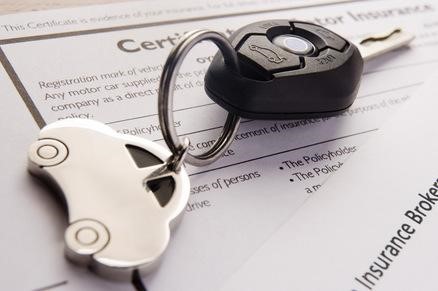
Factors that you must consider to add more value to your motor insurance policy
A motor insurance policy is a must as it provides you with a safety net in case your vehicle meets with an accident, gets damaged by unforeseen events such as floods and earthquakes, or is stolen. It's a way of showering your concern for your valuable asset and investing in its longevity.
Also, it is mandatorily required by the law to have all the essential documents such as a valid Driving License, Car Insurance Certificate, Registration Certificate, and Pollution Under Control Certificate before you drive your vehicle on Indian roads. So, now that we understand the importance of motor insurance India, how can we add more value to it? Let us have a look at some of the factors that can help us do the same.
1. Insured Declared Value (IDV):
Most of us get lured by the policy with the lowest premium amount and opt for it blindly. We usually fail to check our policy's Insured Declared Value (IDV). The IDV is the sum for which the insurance company is insuring our vehicle, and it puts a cap on the insurance company's liability to reimburse us in case of total damage or theft. The lower the IDV used by the insurance company or the agent, the lower will be the premium amount.
Never go for a low IDV of your vehicle just to pay a lesser premium amount. Always ensure that the IDV in the policy reflects the fair value of your vehicle. This will ensure you get an appropriate reimbursement in the unfortunate incident of theft or complete damage to your vehicle.
2. Emergency Assistance Cover:
You can opt for this cover if you don't want to get stranded in case of a breakdown. Such cover will help you to get assistance such as refueling, towing, flat tyre change, or repair of any mechanical failure by the insurer in the city and even on highways within a specified time.
3. Engine Protection Cover:
This cover will add value to your motor insurance India policy in case you reside in areas that are prone to heavy waterlogging and flooding. It will cover damage or failure of your vehicle's engine due to water ingression or oil spill. However, insurance companies usually provide this cover only to vehicles not older than five years.
4. Zero Depreciation Cover:
This add-on cover is highly recommended for high-end vehicles or vehicles with expensive spares. It excludes the depreciation part from the coverage amount. Thus, you get full coverage and can claim the full cost of the vehicle parts that have been damaged in an accident. Without this cover, you will get reimbursed only for the depreciated value of your vehicle parts.
Your motor insurance premium will go up by 15%-20% with this cover. But it can help you save a lot of money if your vehicle meets an accident and gets damaged. Insurance companies usually provide this cover only up to the first five years of a vehicle, and only a few provide it after that in lieu of a higher premium.
5. No Claim Bonus (NCB):
Insurance companies provide a No-Claim Bonus or NCB for the year you do not make any claim on your motor insurance India policy. This is initially 20% in the first year and increases to 50% in the subsequent years if you do not make a claim.
You can also avail the benefit of NCB in your new policy if you have accumulated it in your previous motor insurance policy. This may happen if you sell your car or change your insurance service provider. Therefore, do not raise a claim with the insurance company if the damage is minimal or the repair amount is lesser than the NCB you will earn on your policy.
6. Personal Belonging Cover:
What will you do if your expensive gadgets, such as a laptop, smartphone, or tablet, get damaged when you meet with an accident in your vehicle? Go for a "Personal Belonging Cover," and you can get your personal belongings covered under your motor insurance policy.
Your motor insurance policy can give you standard protection against accidents, damages, or theft. However, if you are wise enough, go for add-ons in your policy like those mentioned above and enjoy complete protection from any damage that may arise in the future. Be secure, be wise, and choose the motor insurance India policy that provides you with the best overall package at the lowest premium amount.
Click HERE to buy a reliable motor insurance India policy to safeguard your vehicle.
Disclaimer: The information provided above is for illustrative purposes only. To get more details, please refer to policy wordings and prospectus before purchasing a policy.

How can customer-centric innovation bring revolution in the insurance industry
This is the era of personalisation. Consumers demand insurance services that can be customised according to their needs. It's no more just shop talk and several policies they need to purchase to cater to all their insurance demands. And in such saturated markets with various available alternatives, customers choose those with a customer-centric approach and excellent after-sales services.
According to various consumer surveys, more than half of the potential and current customers are willing to pay more if the customer service and customisation needs seem lucrative. This mainly involves millennials and gen z's. In that case, almost all the brands are now serving consumer needs in every possible way- content marketing, social media, products, and services.
Are you trying to understand the insurance sector's take on personalisation and centralising their services around their customer base? This blog will discuss several pointers regarding customisation in insurance industries to provide customers with precisely what they need.
1. Future analysis:
It is essential to analyse the current patterns to predict the future projections about the product, the consumer demand, and the scope for improvement with more policy features. These specific parameters are strong values that help determine your business's appearance five years later
2. Simplifying the processes:
While product-based industries will find it a little easier to customise their customer experience, the insurance sector still demands a lot of technical understanding from the customers' ends to avail of the insurance services. It makes it a little difficult for the potential consumers who are new to the insurance world and have just started adulting and taking money matters and investments into their own hands.
And a lack of technical understanding and knowledge can often lead to mistrust in the budding relationship between the insurance company and their customers. Insurance services with 24*7 human and virtual assistants, digitisation of various application processes to help people complete the procedure from the comfort of their homes, etc., have helped the insurance sector boost their customer-centric strategies and receive excellent feedback.
3. Conversations with customers:
Apart from digitising the services and making them convenient, the insurance companies need to have a transparent dialogue with their existing and potential consumers about their services and operations to curate a trustworthy relationship. The insurers need to have an informative dialogue about the markets and their
vulnerabilities so that the second party does not feel strange about the entire process. This will further benefit consumers and insurers as they can have easy conversations about various investments.
Curating reliable customer services and a dash of empathy and trust would do wonders for a better consumer relationship. Reputed insurance companies keep updating their services in line with market trends, current financial trends, critical customer demands, and personalisation options.
Customers can reap similar benefits and personalisation while purchasing general insurance plans. The introduction of technology and customer-centric strategies have made it convenient for customers to invest in their desired insurance plans. The online buying process is helping insurers and customers build a strong connection with a hassle-free process, quick response time, and no involvement of intermediaries. This digital revolution will shape the insurance industry's future for more years to come.
Click HERE to know more about how you can analyse various general insurance plans.
Disclaimer: The information provided above is for illustrative purposes only. To get more details, please refer to policy wordings and prospectus before purchasing a policy.

Everything about electrolyte imbalance – from cause to cure
Electrolyte imbalance is a frequent issue resulting from a poor diet or excessive physical activity. Our body fluids dissolve electrolytes, which are essential for the efficient operation and coordination of our muscles and brain. Some people are more prone to develop this condition than others. You may be experiencing an electrolyte imbalance if you wake up with muscle cramps at night. It may potentially be fatal if this ailment is not treated in time.
The best way to determine if you have an electrolyte imbalance is to perform a complete health checkup and understand your medical history. Ask your doctor about your current medications, including antacids and diuretics. This will help you determine if a particular medication or condition may be causing the problem.
The next step is to get your body checked out with a comprehensive metabolic panel blood test. An arterial blood gas test will determine the acid-base balance of your body, which can also indicate an electrolyte imbalance. Does all of this sound too costly? If yes, make sure that you have good health insurance plans in India well in advance to cover you up.
In this blog, we have covered everything from symptoms to treatment. So, stay tuned till the end.
Causes:
● Several factors can contribute to an electrolyte imbalance in the body. These include diuretics, cancer treatments, and certain medications. In severe cases, electrolyte imbalance can lead to cardiac problems or even death.
● In addition, hypokalemia can be caused by drugs that dilute the body's water, such as lithium.
● It is important to seek medical attention for electrolyte imbalance immediately when you notice symptoms. Rehydration can help relieve the symptoms and restore proper electrolyte balance. A blood chemistry test can diagnose electrolyte imbalance.
● Dry tongue, weakness, and dizziness can all be signs of electrolyte imbalance.
● Another cause of electrolyte imbalance is a faulty diet or a deficiency of certain minerals.
● Excessive loss of fluids is a major result of an electrolyte imbalance. Treatment for an electrolyte imbalance often involves adjusting your water intake and administering electrolyte fluids or medications.
Treatment:
Electrolyte impacts the body's ability to perform many vital functions, including regulating body temperature, easing blood circulation, and digestion. The human body needs high blood plasma electrolytes to keep these functions balanced and normal. Abnormalities in the levels of minerals like sodium, potassium, or calcium result in the imbalance of electrolytes.
The best electrolyte imbalance treatment is to increase fluid intake. This can be done through intravenous fluids or by drinking concentrated electrolyte replenishing drinks. These drinks contain 15 naturally-sourced electrolytes and vitamins. They also prevent the development of electrolyte deficiencies. Further, you should consult a health care professional for diagnosis and treatment if your symptoms don't subside after a prolonged time.
Electrolyte imbalance can be a troublesome issue in the long run, so it's recommended that you stay prepared in advance for yourself and your loved ones. Wondering how? Simply maintain the appropriate electrolyte levels and invest in reliable health insurance plans in India. This may sound like preparing well in advance for the danger and being negative. If you are ready beforehand, you wouldn't have to worry about the arrangement of resources at the end if anything as such ever comes up in your life.
Click HERE to buy the best health insurance plans in India as a safety net for you and your family.
Disclaimer: The information provided above is for illustrative purposes only. To get more details, please refer to policy wordings and prospectus before purchasing a policy.

Here's everything you need to know about cancer health insurance policy
An estimate suggests that there are about twenty million people in the world who suffer from chronic cancer illness. Over the years, the numbers have risen, and cancer has become a common illness amongst the masses. Doctors and scientists have worked tirelessly to find a drug that can cure cancer. But with modern medicines and state-of-the-art facilities, people opt for expensive treatments that can help them combat cancer. With the treatment costs constantly rising, regular health insurance often fails to cover these treatments.
This is where cancer health insurance acts as a boon. If you are confused about what cancer insurance is and if it is beneficial to get one, then this article will help you.
What is cancer health insurance?
Insurance companies provide covers to you during cancer treatment and medication stages. This is known as cancer health insurance. This policy covers stages, including diagnosis, treatment, and post-care for all cancer stages. However, if the policyholder already has cancer, they are not liable to initiate a new cancer health insurance policy.
What are the benefits of cancer health insurance plans?
Opting for a cancer health insurance plan helps the policyholder cover various cancer stages. The premium amount can sometimes be waived if you are diagnosed with early-stage cancer. You can also opt for a monthly spread income depending upon the severity of your illness and the varying treatment requirements.
Why should you opt for cancer health insurance plans?
Compared to other health insurance plans or critical illness plans, cancer health insurance covers all costs starting from the very beginning, even in the case of first-stage cancer. Critical illness plans are targeted towards certain severe illnesses such as stroke, transplants, heart attacks, blindness, and some instances of terminal cancer.
Cancer health insurance also ensures that any complications arising due to cancer are covered. Cancer treatment is expensive irrespective of the cancer stage, so getting cancer health insurance becomes a must.
When should you consider getting a cancer health insurance plan?
Cancer is arguably one of the most dangerous diseases as there is no cure with a hundred percent success rate. So, getting cancer health insurance is imperative to safeguard yourself and your family from the exorbitant costs of treatment. However, if you are contemplating whether to get cancer insurance or not, some of these points might help you in reaching a decision. You may look for online health insurance, which will make your search more convenient with multiple options.
A recent survey has suggested a list of professionals with high cancer risk. Some of these include people working in shifts, specifically graveyard shift causing irregular sleeping patterns and uneven heartbeat, professionals in agriculture, forest, and rubber manufacturing units who are exposed to a high amount of UV rays and sun, and construction and mining workers who breathe toxic air daily are people who are susceptible to increased risk of cancer.
If you or your family members are part of such working environments or have a history of cancer in the family, you must consider getting cancer health insurance. If you do not have the money to fund your medical expenses and your regular health insurance does not cover the cost of cancer, then cancer health insurance can be a good investment.
These are some reasons to consider buying cancer health insurance for yourself and your loved ones. Do not forget to add cancer health insurance to your online health insurance profile.
Click HERE to buy online health insurance.
Disclaimer: The information provided above is for illustrative purposes only. To get more details, please refer to policy wordings and prospectus before purchasing a policy.
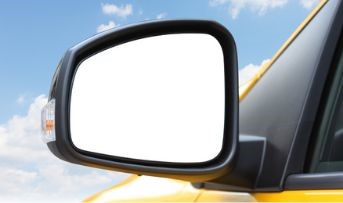
Here are the advantages of having ORVM in your car
Any car driver wants a clear view of their surroundings in the front and back to judge traffic properly. This helps him to drive without any roadblocks or hesitation and minimizes the chances of a possible accident. But how will a driver have a clear view of what is behind his car while driving?
A driver gets eyes on the back of the car with the help of ORVMs and IRVM. ORVM means the “Outer rear-view mirrors,” while IRVM is the Inside rear-view mirror. ORVM is a compulsory part of any car in India. It is mounted to the outside of a vehicle near the driver’s gate and the gate of the front passenger.
Let us go through the advantages of having ORVM in our car.
1. Clear visibility:
ORVMs are an excellent solution for having a clear view of the rear sides of the car. A driver can glance at any of the ORVM and have a view of that respective side of the car. This helps him to know about the traffic behind his car. ORVMs are especially useful while changing lanes on streets and highways. Also, they help us see if there is any vehicle in our proximity while taking a turn or reversing our car.
2. Prevents accidents:
ORVMs eliminate blind spots and give us a clear picture of what is behind us. This helps us to make quick decisions about when and how to change lanes, take a turn or reverse our car. A driver can easily access and operate it while driving. Without ORVMs, it can be difficult to know if obstacles and vehicles are behind us, and the chances of an accident get very high.
3. Convenience:
Older cars had manual ORVMs, and we had to open and close them by hand, making their operation and use inconvenient. But with advancement of technology, cars of the modern age come equipped with electric and auto-fold ORVMs. They are very convenient to use.
Whenever we unlock our car with the remote, the ORVM opens up automatically and gets closed when we lock our car with the remote in case of auto-fold ORVMs. Automatic ORVMs come with adjusters that the driver can easily operate to ensure a perfect vision.
4. Turn-signal repeaters:
Side turn-signal repeaters are usually installed on the ORVMs in cars these days. They give a fancy look to the car and do their job of signaling to other vehicles that the car will take a turn. Also, they are more effective in giving a turn signal than indicators installed on the body of a car.
5. Cameras:
Cars nowadays come with a 360-degree view that enhances our safety and visibility of any obstacle around the entire car and not just one of its sides. Now, how does this feature work? A 360-degree view is possible with the help of multiple cameras installed in the car.
Cameras on the rear bumper are a common feature in many cars. However, besides the front bumper, ORVMs come equipped with cameras that give us a clear side view of the car on our screen. Thus, ORVMs act as the eyes of the car on the sides and provide us with enhanced safety and security.
As we have seen, there are multiple advantages to having ORVMs in our cars. They are not just show-piece but are meant to be used extensively while driving. Having the perfect vision of the outside of the car is paramount while driving, and ORVMs justify this objective. They make our journey safer, and a lot easier and minimize the chances of an accident.
Private car insurance India offers similar safety, security, and protection to any car owner during emergencies. You should not just go blindly with any car insurance coverage. Your car is priceless, and your lives are even more priceless. Hence, you should do your best research, compare various policies, understand their terms, and choose the best private car insurance India that promises you comprehensive coverage at the best premium.
Click HERE to buy robust private car insurance India.
Disclaimer: The information provided above is for illustrative purposes only. To get more details, please refer to policy wordings and prospectus before purchasing a policy.
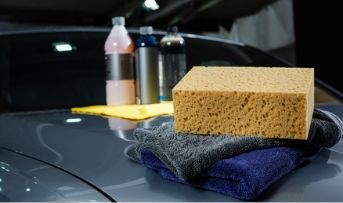
Here are the best five car cleaning accessories you may want to have
Every car owner wishes to keep the vehicle in prime condition to maintain its sleek look. However, it is challenging to do so considering the high levels of pollution and poorly maintained roads. With the hectic daily schedule, finding time to keep your car clean takes time and effort.
Car cleaning is a part of the car ownership experience that you cannot ignore. It is just as essential to keep your car clean inside out as to have regular car servicing, a pollution certificate, and a car insurance policy. Always research the best car insurance company in India to purchase adequate insurance coverage that safeguards your finances against damages.
While a weekly car wash can keep your car clean for a short period, having the right cleaning accessories can ensure that your vehicle stays clean during the week.
Here are five car cleaning accessories that are easy to use and effective.
1. Wireless handheld vacuum cleaner:
While vacuum cleaners for homes have picked up demand in the past two decades, they are also an effective cleaning solution for your car. Picking up a compact car vacuum cleaner is a quick solution to keep your car’s interiors clean at all times.
It does not take up too much space, operates efficiently, and helps keep your vehicle free of dust or waste particles of any size with minimal effort. It is incredibly convenient if you have kids since keeping them from spilling food or drinks and dirtying the car floor and seats is impossible.
2. Microfibre cloth:
A microfibre cloth is an essential cleaning supply in most spaces, and a car is no exception. They speed up the cleaning process and pick up even the smallest particles. You can restore the shine of the car’s paint underneath the dust by running the cloth on your seats, windows, and exteriors.
Another benefit is that they absorb liquids rapidly, which helps deal with accidental spills on leather seats. While you need additional supplies to eliminate any odour or deal with the stickiness a drink spill may cause, a microfibre cloth is a basic necessity in dealing with the situation.
3. Liquid glass cleaner:
While the other accessories help maintain your car’s cleanliness, this is essential to ensure proper visibility and prevent mishaps. Keeping your mirrors and windshield clean are primary requisites that help maintain perfect vision for the driver, which can reduce the possibility of accidents. Therefore, a microfibre cloth, if needed, and some glass cleaning solution goes a long way in keeping your mirrors and glasses clean to facilitate better visibility of the incoming traffic.
4. Wheel cleaner:
An often overlooked part of a car is the tyres. Newly purchased and well-maintained cars have shiny alloy rims that cause envy to most car enthusiasts. A little bit of wheel cleaner and a quick wipe with a microfibre cloth take care of any grease or dirt accumulating on your tyres and make them shine like new with minimal effort.
5. Rust remover spray:
Rust and stain remover spray comes in handy when your car needs a quick. It eliminates the squeaking of rusted parts, prolongs the life of parts, and helps remove sticky particles from the exterior. Spray some onto the sticky residue you wish to get rid of and wipe it off with a microfibre cloth to ensure that there are no scratches on the paint and that the look of your car is maintained.
Maintaining your car may seem like a daunting task. Using basic supplies and spending a few minutes can help maintain your car. Additionally, purchase a car body cover to protect your vehicle from dust, sun exposure, falling leaves, and bird droppings. Lastly, don’t overlook the benefits of having reliable car insurance. Look for the best car insurance company in India and assure yourself of coverage that provides maximum security to your valuable asset during emergencies.
Click HERE to buy insurance from the best car insurance company in India.
Disclaimer: The information provided above is for illustrative purposes only. To get more details, please refer to policy wordings and prospectus before purchasing a policy.

Complete guide to intellectual property insurance
How often have you heard the phrase intellectual property? Any creation that stems from one's mind or intellect is called intellectual property. It can take any form, starting from a painting, a design, an invention, or a tune. There is no set category for intellectual property.
An intellectual property, more commonly known as IP, is the foundation of a new creation. It is imperative to protect your IP to avoid fraudulent use or reproduction. There are many ways in which one can ensure that their ideas are not plagiarised or used without proper consent. Patents, copyrights, and trademarks are a few ways to protect IP.
Did you know that there exists an insurance for intellectual property? This article will shed light on intellectual property insurance and everything you need to know about it.
Let's understand what intellectual property insurance is:
Intellectual property insurance helps companies or individuals to cover the cost of litigation and court trials in case of being accused of IP violation. It also covers those who want to sue a company with an IP violation lawsuit. With the growing number of startups, IP has become a valuable asset. It is the foundation of a company's ethics, and a solid IP can help it reach new heights.
The increasing competition and the need to leave a mark in the venture capital market have led to various fraudulent cases of IP infringement. Since IP is one of the most valuable assets in recent times, the cost of IP litigation is expensive. Intellectual property insurance is a must to cover the cost of the exorbitant court proceedings.
Types of IP insurance:
Let's take a look at the kinds of IP insurance available –
1. Infringement defence:
This policy is for those who need to be safeguarded against a party who claims IP infringement against them. This defensive insurance policy acts as a safety net for companies that are held accountable for infringing patents, trademarks, or copyrights. Since the litigation costs for these cases can be very high, the policyholder need not worry about the costs. The policy provider is bound to make payments for all litigation expenses, settlement amounts, and other damages.
2. Abatement enforcement coverage:
This policy is for those IP holders who need assistance and resources to enforce their IP rights and claim infringement against others. This enforcement coverage enables the company to proceed with the legal proceedings without worrying about the legal fees. This policy also ensures that any damage is paid in full to the policyholder if the opposing party decides to counter-sue.
Big and small companies have claimed that the biggest challenge they face at the beginning of a new product launch is intellectual property risk. Various trade secrets, product building, and marketing strategies fall under intellectual property. IP insurance cover will protect your product in the market and help evade baseless lawsuits.
Intellectual property insurance offers a wide range of covers, including but not limited to infringement liability, contractual liability, enforcement, intellectual property rights protection, and other disputes. Add covers, and customise your insurance needs depending on the company or product you intend to launch in the market.
Over the years, we have seen various technological advancements bloom, with start-ups shaping the country's future. Putting in years of hard work only to realise that your work or idea has been copied by someone else can be one of the most frustrating and painful experiences. To avoid such situations for yourself and your company, do not forget to buy general insurance online. As discussed above, these insurances will significantly help anyone looking to claim or deny an infringement. All one needs to do is in-depth research on the insurance category to invest and look out for the best available options. Hard work has no substitute, and so does security.
Click HERE to buy general insurance online.
Disclaimer: The information provided above is for illustrative purposes only. To get more details, please refer to policy wordings and prospectus before purchasing a policy.

Have you heard about insurtech and the seamless opportunities it brings
Technology has taken the world by storm, and new inventions and innovations every day are seamlessly becoming part of our daily lives. In this article, we will talk about the emerging technology trend of insurtech in the world of insurance and understand how it will change insurance in the coming times.
What is insurtech?
Insurtech is a combination of the terms insurance and technology. This term was coined to define the culmination of digitalisation, technology, and insurance. Insurtech is the modern-day solution to all insurance-related qualms and queries. Applying novel technology trends such as machine learning, artificial intelligence, and extensive data analysis has helped insurance make advancements in leaps.
What are the benefits of insurtech?
The benefits of technology have been countless over the years. Combine that with insurance, and you have diverse opportunities in the insurance sector. Not only has the involvement of technology made it a more straightforward and less cumbersome process for the policy provider, but it also has made buying insurance a quick and easy task for the consumer.
Technology intervention has aided the insurance provider in calculating the overall credibility of the customer. The mammoth task of manually analysing and decision-making by policy providers has taken a back seat as technology like machine learning has made the process faster and more accurate.
Insurance companies can now target a wider audience and cater to their specific needs while sitting miles away with the help of technology. Factors such as customer acquisition and onboarding, global expansion of business, and enhancing the user experiences help companies draw more happy customers. It also has allowed insurance companies to handle and process claims efficiently.
When it comes to the customers, what better than sitting in the comfort of your home and buying online general insurance? Thanks to AI, insurance prices are tailor-made per the customer's needs. This gives a chance for companies to ditch their standard pricing methodology and stick to a more dynamic cost analysis.
What are the components of insurtech?
Insurtech has a variety of components, but it can be broadly divided into two components –
1. Technology-based:
● Artificial Intelligence: The process of automation to yield better and more accurate results.
● Machine Learning: The collection, collation, and analysis of vast chunks of data to determine a pattern.
● Internet of Things: Objects with sensors or processing abilities that can aid in risk assessment.
● Apps: For a better customer relationship experience.
● Blockchain: To improve security and protect sensitive information.
2. Solutions based:
● Appetite Solutions: Helps to find the best policy for a client across existing policies in the market.
● Data Solutions: Easy access to personal actionable data for respective users.
● Payment Solutions: Digitised payment solutions help for a better customer experience.
● Quoting solutions: Automated quote generation, thus reducing the waiting time for customers and policy providers.
What are the applications of insurtech?
1. Customer verification:
The KYC or "know your customer" is a process that all insurance companies must follow. A huge amount of data needs to be processed to ensure the legitimacy of the customer. Insurtech has made the process hassle-free by storing data directly from the issuing authority.
2. Claim management:
With automated analysis of claim documents, standardised records evaluation is maintained and later verified by agents or policymakers.
3. Detecting fraud:
Insurtech can verify policyholders' claims and crosscheck any duplicate transaction or third-party interference to ensure that no fraudulent claims are made.
These were a list of some key elements of insurtech. As mentioned above, technology is a boon to customers and policymakers alike and can benefit both parties. Customers can also use general insurance plans to safeguard their assets with the best coverage. Checking out online general insurance plans can be a smart way to explore various options and select the ones with more advantages, good premiums, and the ones that will give the best returns on your investment.
Click HERE to know more about online general insurance.
Disclaimer: The information provided above is for illustrative purposes only. To get more details, please refer to policy wordings and prospectus before purchasing a policy.

Here’s how you can avoid getting fined due to over-speeding
The penalties for traffic defaulters have increased steeply with the passage of the Motor Vehicles (Amendment) Bill in the year 2019 in India. For instance, the fine for driving without a licence has been increased from INR 500 to INR 5000. Similarly, the penalty for over-speeding has increased from INR 400 to INR 2000.
Also, the police have been extra vigilant, and as a result, the issuance of traffic challans has significantly increased in the last couple of years. Do you wish to stay protected and avoid draining your hard-earned money by paying for hefty traffic challans due to over-speeding your vehicle? Let us see how you can achieve this and prevent over-speeding.
1. Be mindful of the speed limit:
Although fast driving seems thrilling to some people, driving over the speed limit has grave consequences. The speed limit has been put in place by city traffic police with many factors in mind, including the friction of the surface of the road and whether it has schools or hospitals nearby. Be careful and pay attention to board signages alongside the roads. Ensure to drive your vehicle within the speed limit as per the signage on the respective road.
Over-speeding might not only affect your life but also put the lives of others at risk. According to a report by the Ministry of Road Transport and Highways in 2020, 71% of accidents were related to over-speeding on Indian roads, resulting in 66% of fatalities. Pay close attention to signboards when driving, or you might incur a fine of up to INR 4000.
2. Yellow lights mean slow down:
Everyone is in a hurry to reach their destination. Although jumping a light might seem like a minor offense at any given moment, it causes severe accidents in India. To deter the public from jumping a red light, fines have been levied that range up to INR 5000, and the driver can even be sent away up to a one-year prison sentence for this offense with the suspension of their driving licence.
To avoid such consequences, be prepared to stop right when the yellow light comes on, and stop a few metres before the stop line. Try not to block the zebra crossing and create inconvenience to the pedestrians.
3. Speed camera alert applications:
You will be surprised to know that there exist applications that can alert us of upcoming speed cameras from a few hundred metres in advance. Moreover, most of these applications are free and convenient to operate.
However, use these devices as a reminder that you are over-speeding your vehicle, not as an escape from speed cameras. Make a habit of following the speed limit set by the traffic police.
4. Never drink and drive:
Often drinking provokes you to do things you don't usually do when sober. And, one very common concern among drivers is rash & fast driving. Driving under the influence of alcohol is a punishable offense in India, and you will get a hefty traffic challan for drunken driving and over-speeding when intoxicated. Moreover, it can lead to serious accidents and cause property loss and lives.
Hence, do not drive when you have consumed alcohol or are heading out for a party. Book a cab to get back home if you are drunk, even if you came in your car. Otherwise, ensure that a non-drinking friend takes the wheel for you.
Another important thing is never to run away or escape the spot if a police officer finds you guilty of violating a rule and stops you. Always accept that you’ve made a mistake and support the officials doing their work.
You should always follow the above steps to avoid getting traffic challans and paying fines. Receiving challans is not a good feeling, and repeated mistakes can make you face severe consequences. So, be a responsible driver and ensure the above traffic practices that help you avoid getting fined due to over-speeding. In addition, car insurance online India can protect your car with adequate coverage against any possible damage due to an accident.
Click HERE to buy car insurance online India and stay protected while driving.
Disclaimer: The information provided above is for illustrative purposes only. To get more details, please refer to policy wordings and prospectus before purchasing a policy.

Let's understand the psychology behind honking and the ways to tone it down
Honking while driving on the road is a serious topic and a primary source of noise pollution. Persistent noise from honking can lead to stress, annoyance, depression, and hearing impairment. It also causes road accidents due to sudden distractions. If you are wondering why people honk so much, you should understand the psychology behind it.
Reasons why people honk their horns so much.
Generally, it would be best to use a horn to avoid collisions, when necessary. However, drivers also honk for other reasons, such as
1. Honking by habit:
Most Indian drivers honk just because they feel like it, even if it is unnecessary. You may find honkers honking at turns, at blind corners, and at pedestrians walking or crossing the roads. Drivers also honk recklessly during a traffic jam to move the traffic. In this behaviour, the driver needs to show more awareness and patience.
2. Honking as a way to communicate:
In India, drivers use horn honking to communicate without words with other drivers on the road. Drivers use several horn-honking patterns, each with a different meaning. For instance, drivers use single honking when waiting outside their friend's house or when someone is in front of their vehicle, which means "I'm here".
The double horn means, "please don't be dumb", and the triple horn means, "I am upset that traffic has not moved". Some aggressive drivers use the repeater triple horn to tell other drivers that they are more important and ask them to get out of their way.
Another form of aggressive horn honking used by large vehicles is the big blast, meaning "I can do whatever I want because I am mighty".
3. Continuously honking at high speeds:
You may have seen a reckless driver going forward and constantly honking, leaving everyone behind. Such drivers are always in a hurry to arrive on time for work, meetings, or other events. However, irresponsible driving habits are dangerous and can cause more havoc on traffic.
You should avoid driving in a hurry or using a horn unnecessarily. While talking about safety, buying online motor insurance is essential to protect your vehicle from damages.
How to reduce unnecessary honking while driving:
● Most people need to learn the severity of unnecessary honking and its disadvantages. You should spread awareness about honking and noise pollution to your friends, family, and neighbours.
● Take driving lessons from renowned driving schools to learn the basics of honking etiquette, like avoiding honking at no-honking zones, near hospitals, schools, forest areas, etc.
● Unnecessary honking can also lead you to pay a ticket (challan). You should learn about when and where you should not honk.
● The government should impose strict laws against unnecessary honking and a maximum dB limit for large vehicles.
There are many reasons why drivers and riders like to honk so much. If you are like most drivers in India, you should learn the reasons behind drivers honking their horns and ways to reduce them. Once you understand the basics of honking etiquette, you should tell others to spread awareness.
In addition to honking etiquette, it is also essential for drivers to have motor insurance to protect them from fines and damage costs in the future. You can get online motor insurance quickly with minimum documentation and without the hassle of physically visiting the insurance company's office or paying a commission to an agent.
Click HERE to buy new car insurance.
Disclaimer: The information provided above is for illustrative purposes only. To get more details, please refer to policy wordings and prospectus before purchasing a policy.

Best tips to lower your health insurance premium
India is home to some of the best healthcare facilities in the world. Be it some government hospitals or super-specialty hospitals, they are equipped with state-of-the-art facilities and highly skilled doctors. However, with the rising costs of treatments and healthcare, buying health insurance is necessary for everyone. Even with all the facilities, timely treatment is often not easily accessible, so people keep turning to premium healthcare.
Super-specialty hospitals promise premium services at the cost of steep expenses, and most people from middle-class backgrounds cannot afford these treatments. This is also the reason why most people invest in health insurance. But, with increased services, the cost of premiums will also significantly rise.
If you want to reduce your health insurance premium without compromising on the services, this article is just for you.
1. Start early:
Since most health insurance plans consider your age and medical history to calculate premiums, starting early can save you a lot of money on premiums. A younger body has a better immune system, and thus the risk of diseases or illness is significantly low. If you are someone who has already been diagnosed with age-related issues such as diabetes, blood pressure, or other heart conditions, then your premium amount will also increase. To ensure that you are getting a policy at the best rates, start early and invest in the best health insurance in India.
2. Online health insurance:
Online health insurance has a lot of benefits, but the most significant of them is how cost-effective it is. With online insurance, you can avoid broker fees and other administrative charges. You also can buy health insurance from anywhere, with the freedom to choose the desired policy by comparing multiple plans.
3. Compare plans online:
There are many health insurance policies in the market and deciding on the one that suits your choices can be overwhelming. But in the long run, having an informed idea of various aspects of your insurance policy will be helpful. You can compare insurance covers, premiums, and add-on costs online. With the internet at your disposal, comparing various insurance companies is a smart way to ensure that your company is not overcharging.
Another great alternative is to use the online insurance calculator. Different companies have a calculator that helps you calculate the overall cost of your insurance. Once you enter all the covers you need, this calculator will give you a rough estimate of your health insurance plan. Compare different prices online to choose the best option for you.
4. Extended validity:
Most insurance plans have a validity of one year. However, some companies provide significant discounts on policy periods of two to three years. Not only you reap the benefits of fantastic deals but getting a policy that extends to three years also helps you evade the annual renewal costs on your policy.
5. Family plans:
Health insurance is mandatory not just for ourselves but also for our families. However, the cost of buying health insurance for every family member can add up to a lot. This is why insurance companies have initiated family health insurance plans. Family plans provide comprehensive coverage to your family members. A family insurance plan is a smart way to cut costs on individual premiums while also maintaining the scope of various covers.
These are a few ways in which you can ensure cost-effective insurance planning. Thorough research on different insurance companies and their policy plans can help you make an informed decision that suits your budget and provide maximum coverage. Remember that health insurance is essential, but what is more important is to take good care of your health. Regular exercise and healthy eating habits are a simple start to leading a healthy and happy life. Invest in the best health insurance in India for your loved ones to safeguard yourself against any expenses you might incur in hospital and medical bills.
Click HERE to buy the best health insurance in India.
Disclaimer: The information provided above is for illustrative purposes only. To get more details, please refer to policy wordings and prospectus before purchasing a policy.
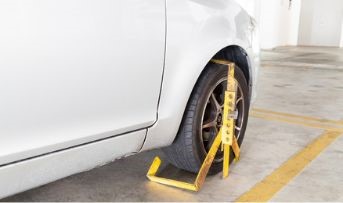
Understand these five car parking rules to avoid traffic violation
Car parking has always been a major challenge in most metro cities. The number of cars on the roads is constantly increasing while the parking space and the available supporting infrastructure have yet to develop at a matching pace.
A traffic challan for violation of parking rules is very pinching and bothering. What do we do if there is not much free legal space available for parking our car? The legitimate answer is understanding the car parking rules to avoid traffic violations.
Let us go through the five car parking rules that one must know.
1. Way of parking:
According to section 122 of the Motor Vehicles Act, 1988, a car owner should always park his car in a manner that does not cause any inconvenience to other road users. Also, the way of parking the car should not be dangerous, nor should it cause any obstruction to other vehicles and users of the road.
If there is a signboard depicting the correct manner of parking your car on the roadside, you should abide by it and park your car accordingly.
2. An abandoned or unattended car:
According to section 127 of the Motor Vehicles Act 1988, you cannot abandon your car or leave it unattended at a public place where you cannot legally park it.
A police officer with jurisdiction in that area can tow your car away or make it immobile by using methods such as clamping the wheels. Also, you or the person in charge of your car will be responsible for paying the towing charges.
3. Prohibited parking:
You cannot park your car in a no-parking zone or any spot where parking is prohibited, on a footpath, on the wrong side of the road, on private property without the owner's permission, alongside a parked vehicle so that you do not obstruct the traffic flow, in front of any gate that blocks the entrance to any place, in front of a school or hospital entrance, near a bus stop, a traffic signal, or a road crossing.
Also, your vehicle should not obstruct the view of a signboard. You are not permitted to park at a bend, at the top of a hill, or even near or on a bridge so that you do not obstruct incoming traffic.
4. Parking restrictions at home / society:
Even your housing societies or homes have car parking rules you must follow. You should park your car so that it does not obstruct or block your neighbour's gate.
It is illegal to park your car at the boundary of your own house if your parking style obstructs the neighbour's gate in any way. He may be unable to open the gate of his house fully. In such a case, he can file a case, serve you a legal notice and obtain an injunction restricting you from blocking his gate.
5. Blocking a parking lot exit:
You cannot park your car in front of another vehicle in a parking lot in such a way that his way is obstructed, and the owner of that vehicle is unable to take his car out. In such a case, he can call a cop, and you will have to pay a fine for blocking his way.
Parking fines differ from one city to another in India. Understanding the parking rules in your respective cities is crucial to avoid traffic violations. So, abide by these parking rules to avoid catching yourself in chaotic situations and save on fines and penalties.
Similarly, having a good car insurance policy will help you save on other penalties, as car insurance is mandatory to drive legally in India. Also, it will provide coverage in case of an accident, a mishap involving your car, or even if it gets stolen. Hence, go for the best car insurance in India and forget the stress of expenses involved in unexpected situations.
Click HERE to buy the best car insurance in India.
Disclaimer: The information provided above is for illustrative purposes only. To get more details, please refer to policy wordings and prospectus before purchasing a policy.

Best tips to detect fraud in your health insurance plan
The time of a health crisis is a vulnerable time for you and your loved ones. And this moment of panic is where most frauds occur, where mischievous minds exploit your vulnerability with their fraudulent strategies. Everyone can't look into the small details of fraud unless they understand how it takes place beforehand.
Medical emergencies are a time of great financial insecurity. A lifetime of savings can be drained due to your loved one getting into a sudden accident or the unexpected detection of chronic disease. In this time of need, health insurance is a great boon. It can provide you and your dear ones with much-needed protection from financial disaster. However, it is imperative to have the correct information to avoid falling into the trap of health insurance fraud. You won't ever want your hard-earned money to go to waste by falling prey to frauds or scams.
This blog gives you some pointers you can keep in mind to safeguard yourself from health insurance frauds.
Most common types of fraud:
Before getting into how to protect yourself from this deceit, here are some of the most common ways people can swindle money from your health insurance policy –
1. Medical identity theft: This type of fraud involves scammers using your personal information to charge fraudulent bills or make health insurance claims in your name.
2. Marketing scams: If you do not do adequate research about the company's reputation and decide to buy insurance, it may result in the company taking a high premium from you but not responding to any claims. These companies give out forged insurance documents to individuals and then become untraceable.
3. Ambulance fraud: Holding the spot of being the most overlooked type of fraud, ambulance fraud comes in the form of unnecessary charges and facilities you might not have taken, paying huge dividends to scammers.
Tips to safeguard yourself from scammers –
1. Take your time: The biggest red flag in an insurance company is when they ask you to make hasty decisions. Avoid schemes that promise you a lesser premium or better claim if you sign immediately. It is advisable to take your time with the decision-making process and be sure what kind of policy is necessary for you.
2. Be wary of unsolicited calls: Reputed insurance companies rarely call individuals to market their health insurance policies; if they do, they never pressure a customer. Be cautious of aggressive salespeople. However, even if the salesperson seems to be from a reputed company, you must never share your personal information or documents without proper research about the company.
3. A hard copy of policy and seller's signature: Request a copy of the policy they offer, complete with the company's seal and seller's signature.
4. Extensive research on plans: Become familiar with the kind of plans that insurance companies usually offer. This will help you be aware of unsolicited advertisements to sell insurance policies. Understand that if something is too good to be true.
5. IRDA licence: If an agent does not have an IRDA licence, there is a higher probability that they are a scammer.
6. Avoid online transactions: It is safer to avoid sending any money online to the agent upfront unless it is an IRDA licenced insurance firm.
Researching a quality health insurance policy is already a demanding process. The process is complicated, from finding a good plan to cover all your needs to looking for a reputed doctor in an emergency that your insurance covers and then claiming the insured amount. This is when people are most susceptible to getting scammed by fraudsters.
Be careful while opting for a health insurance policy, and always remember to read the fine print. Always buy from genuine insurance firms and avoid the manipulative sales tactics of agencies. Rely more on your personal research for buying the best health insurance and guarantee yourself trustworthy and reliable protection.
Click HERE to know more about health insurance.
Disclaimer: The information provided above is for illustrative purposes only. To get more details, please refer to policy wordings and prospectus before purchasing a policy.
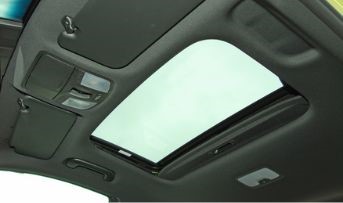
Keep your car looking classy with a clean sunroof!
The trend of automobiles that exude luxury isn't on the decline anytime soon. With several unique yet functional features rolled out by top manufacturers to entice drivers, the automobile sector continues to evolve.
Sunroofs are one such feature that has been in the market for long enough but continues to catch the fancy of many automobile owners. While they let in the fresh air and natural light on the go, many owners avoid purchasing cars with sunroofs because they fear excessive maintenance.
If you feel the same, here are some tips to keep your car's sunroof in good condition:
1. Clean it frequently
Dust and debris can easily get lodged inside the sunroof due to its positioning. The component's performance will be compromised if it gathers trash and dust particles beside and within. It is essential to clean the sunroof from top to bottom, including the areas surrounding it. Your car's sunroof will remain spotless and operate smoothly with regular cleaning.
2. Annual deep clean
You should thoroughly clean your car's sunroof once a year with the following:
● Clean the sunroof properly
● Now pump low-pressure air through the drain tubes to clean the trough
● The last step is to insert a thin, flexible, non-puncturing wire into a drain tube, twist it anticlockwise, clockwise again, and gently push it farther into the line.
3. Use appropriate cleaning products
Never use any cleaning agent or solution to clean the sunroof. You can harm the quality of the rubber seal in the sunroof by using a harsh or improper cleaning agent. The best advice from professionals for cleaning a sunroof is to use warm tap water or isopropyl alcohol (IPA). 4. Set it free to move
Inspect the working parts of your car's sunroof if it sticks or seems to be moving slowly to look for cracked or stripped gears or a build-up of dirt and debris. To find the location of the issue, start your car and cycle the roof between the open, closed, and vent positions. After a few cycles, clean everything if it works more smoothly, and lightly lubricate all visible moving components with a mild, heat-resistant grease. If you hear a squeaking noise or see the sunroof not opening and closing correctly, visit an expert mechanic to rectify the problem.
5. Look for rust around the hinges
You should check the mounting hardware for any signs of rust or wear and tear if the sunroof in your automobile is manually operated. Moisture can also cause it to corrode. The hardware won't rust or sustain any damage if it is properly maintained. You should pay close attention to the mounting hardware and clean it properly when cleaning the sunroof.
6. Lubricate the moving parts
Lubrication is necessary for a sunroof's moving parts to operate effectively. But, using the proper grease is crucial to ensure efficient and trouble-free operation. Conventional mineral grease is inappropriate for lubricating components in a sunroof. For this, you must use heat-resistant grease. This grease is designed for high temperatures.
7. Pay close attention to any unusual sounds
Remember to listen for any odd noises from your sunroof while opening and closing it. When opened and closed, you must adequately clean the sunroof if it makes a scraping noise. The sunroof auto glass is likely to shatter if there is a popping sound. Consequently, before the issue worsens, it is critical to seek professional assistance.
The correct operation of a sunroof depends on regular maintenance. Your sunroof can get damaged due to improper care. Take your car to a service centre that fixes auto glass if the sunroof makes odd noises even after proper maintenance. While we are discussing your car's upkeep, it is also crucial to buy car insurance. Reliable car insurance can protect your asset from mishaps and monetary stress.
Click HERE to buy the best car insurance in India.
Disclaimer: The information provided above is for illustrative purposes only. To get more details, please refer to policy wordings and prospectus before purchasing a policy.


